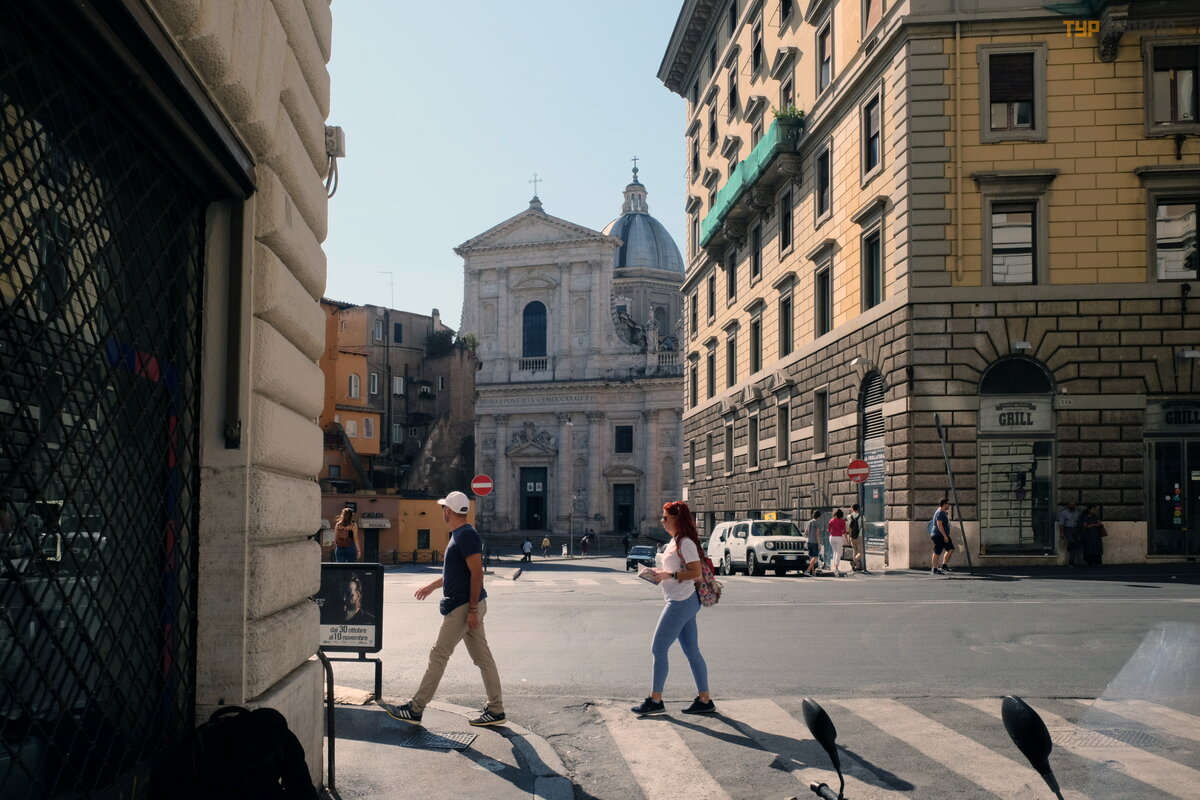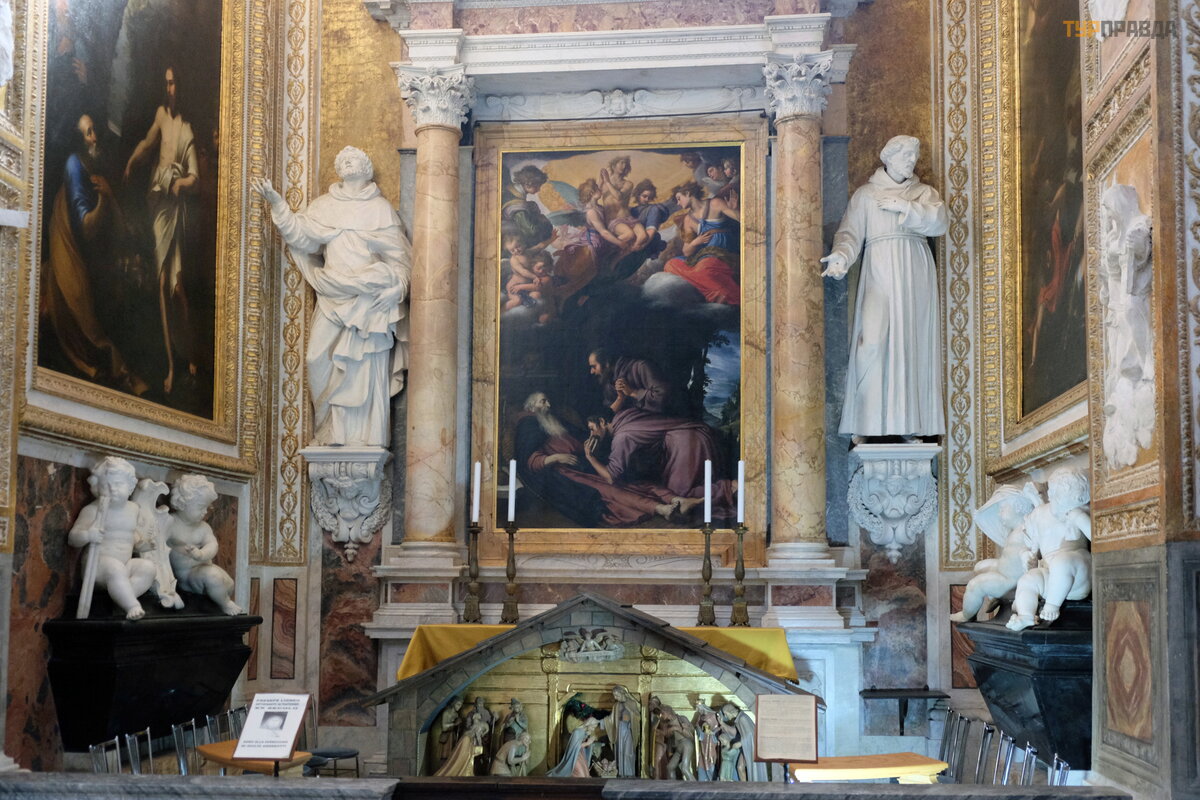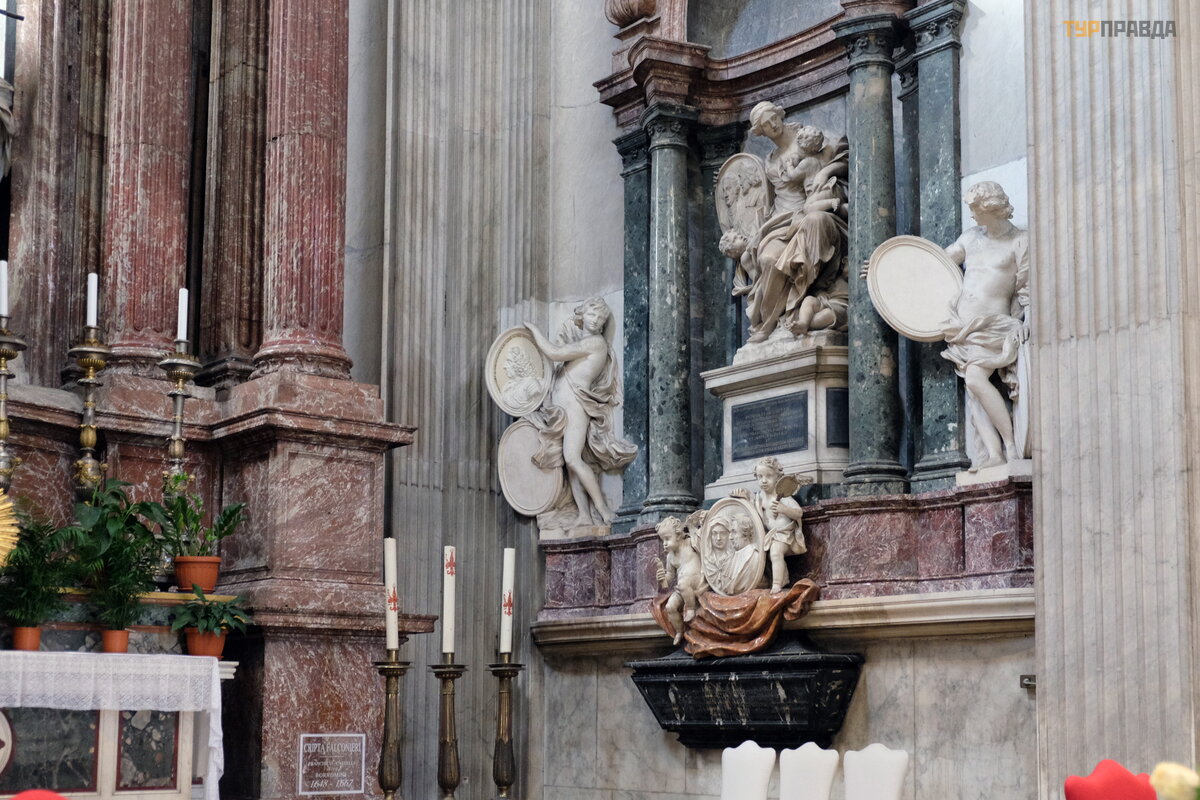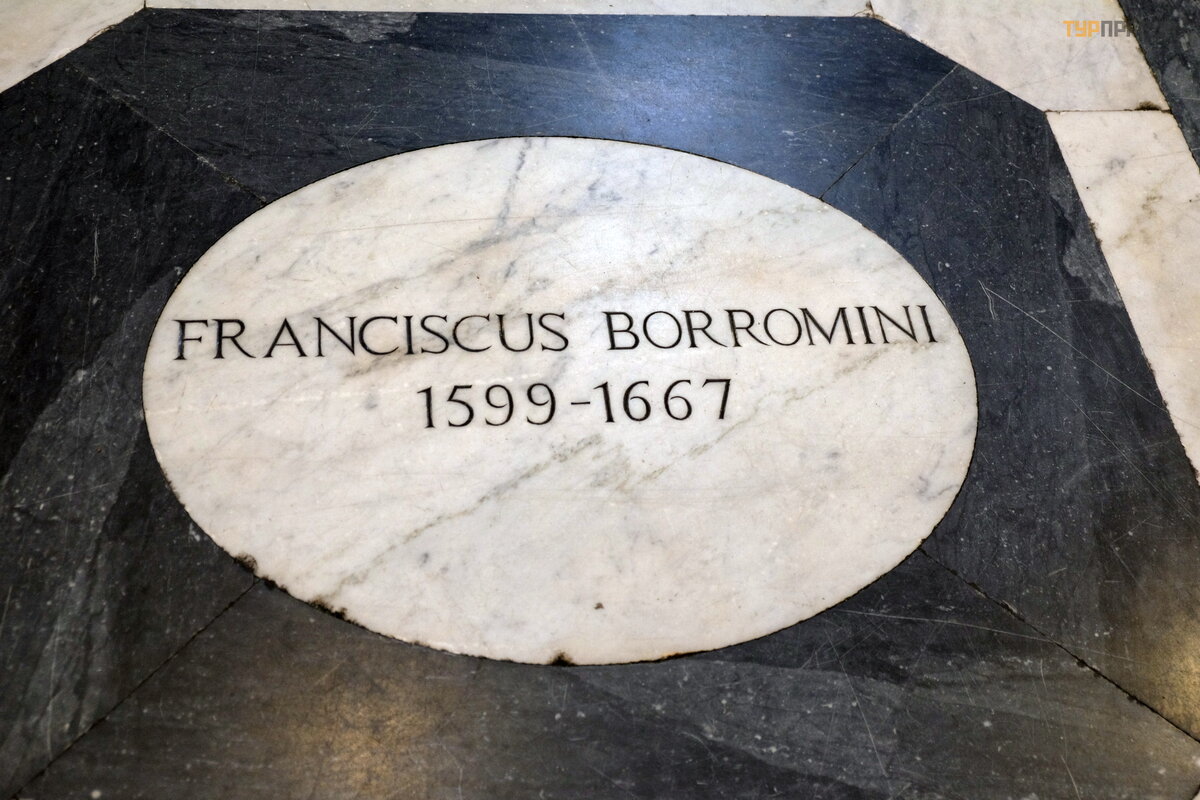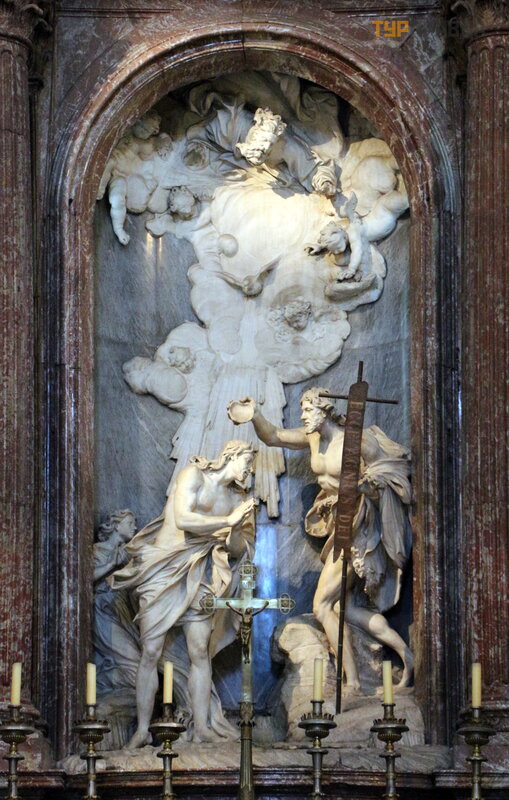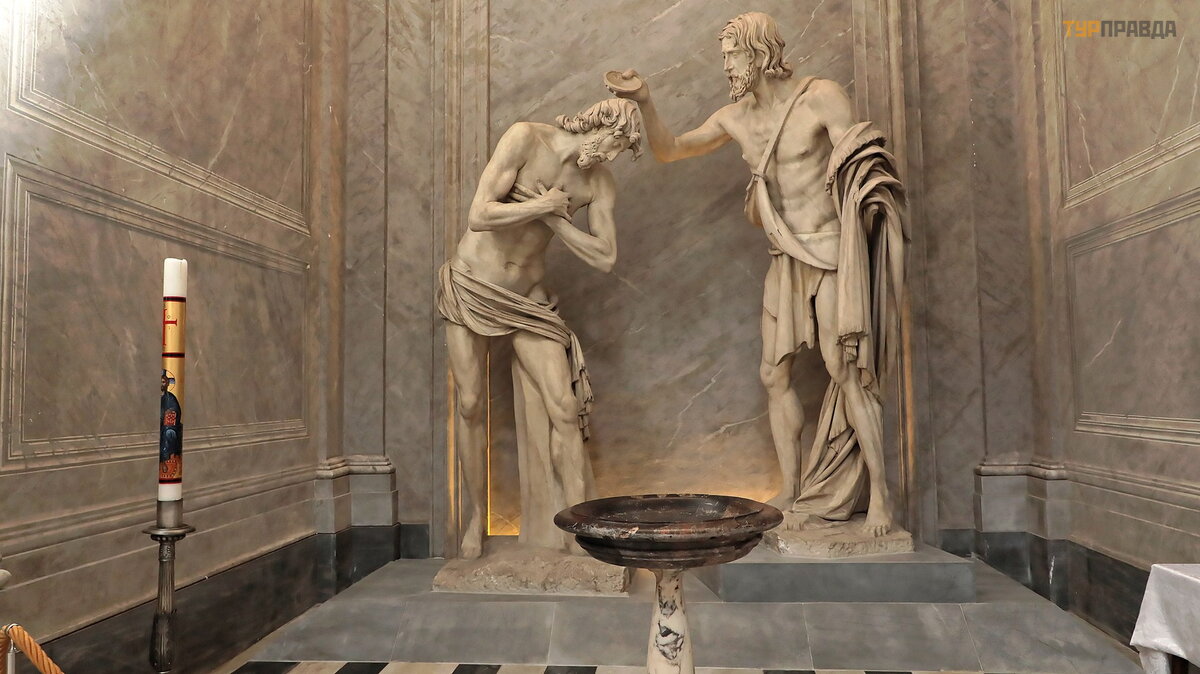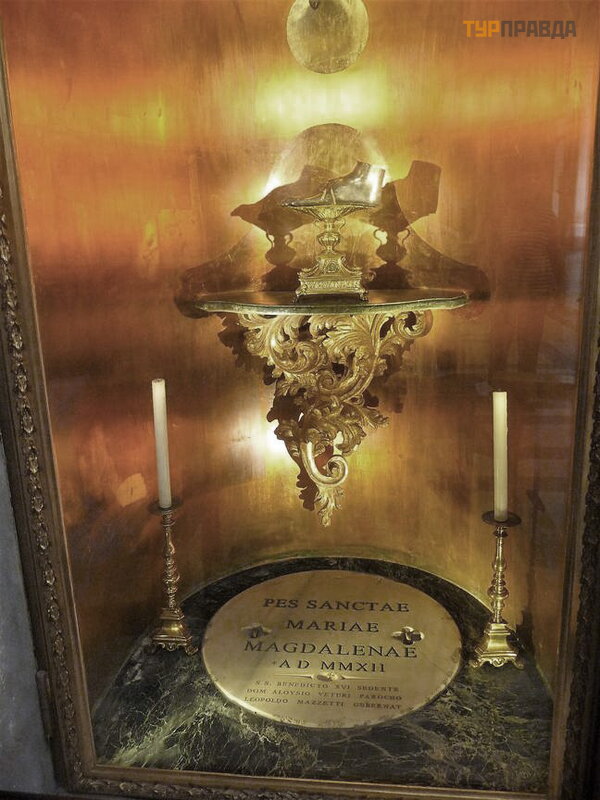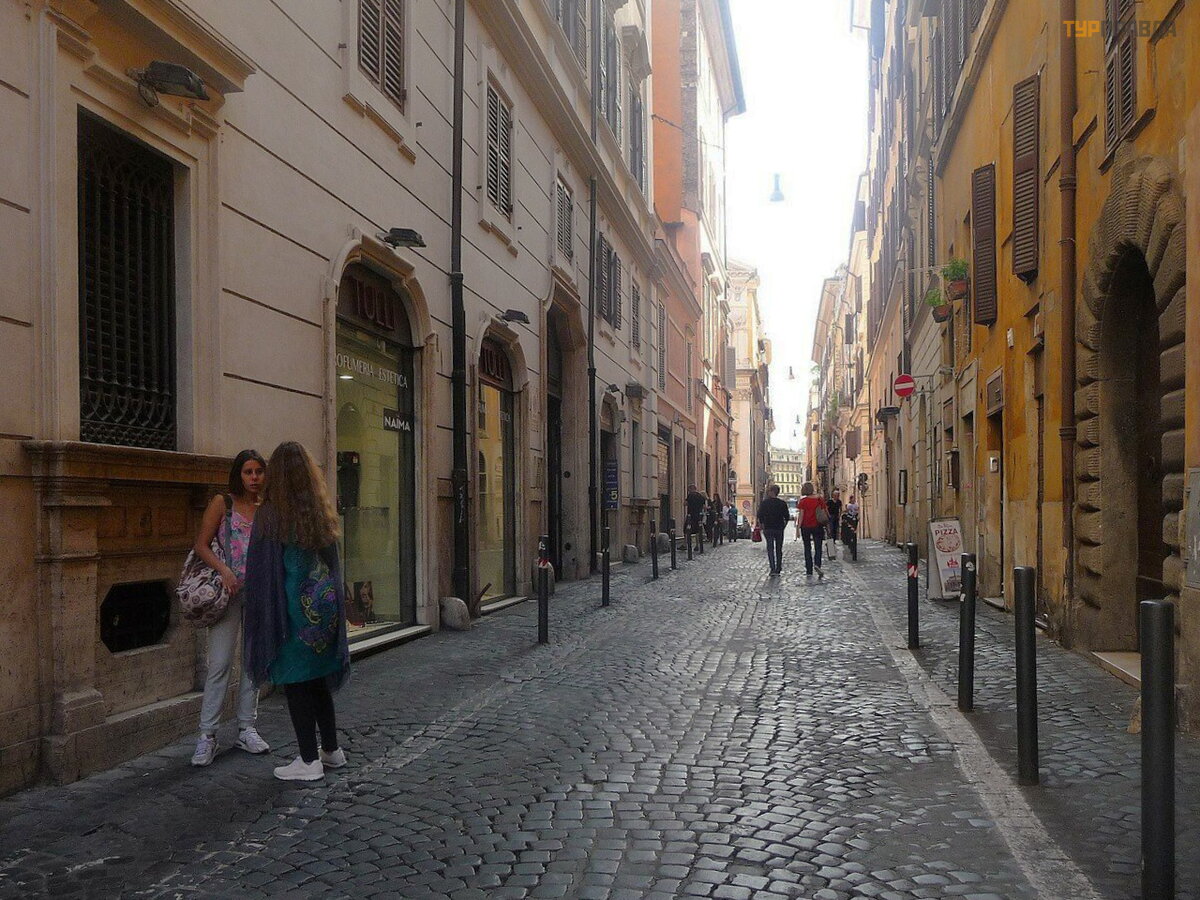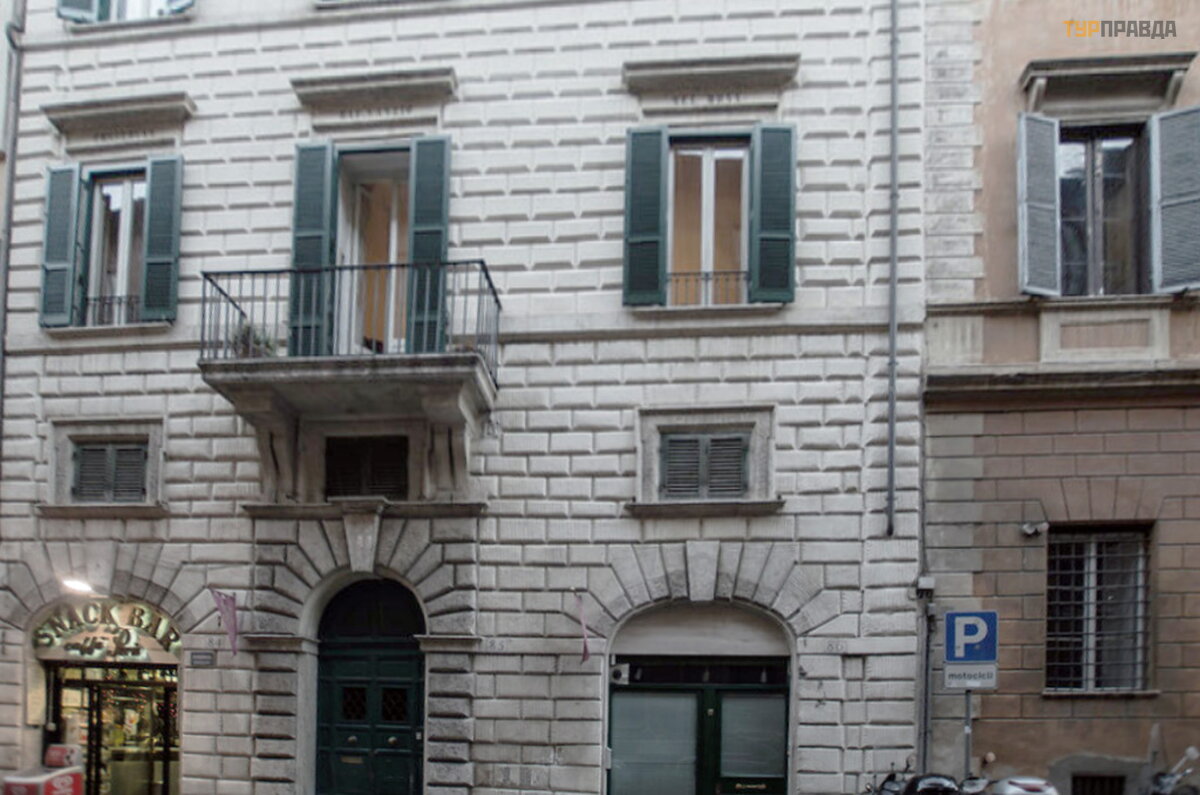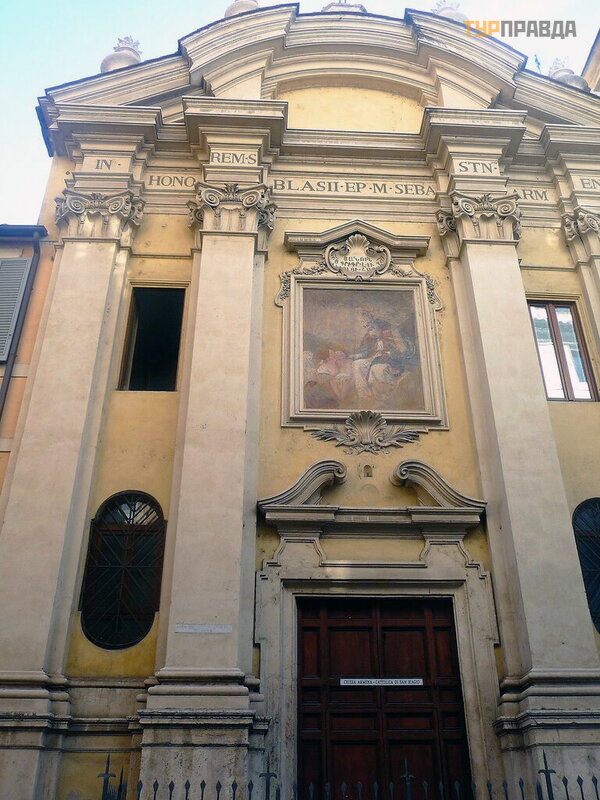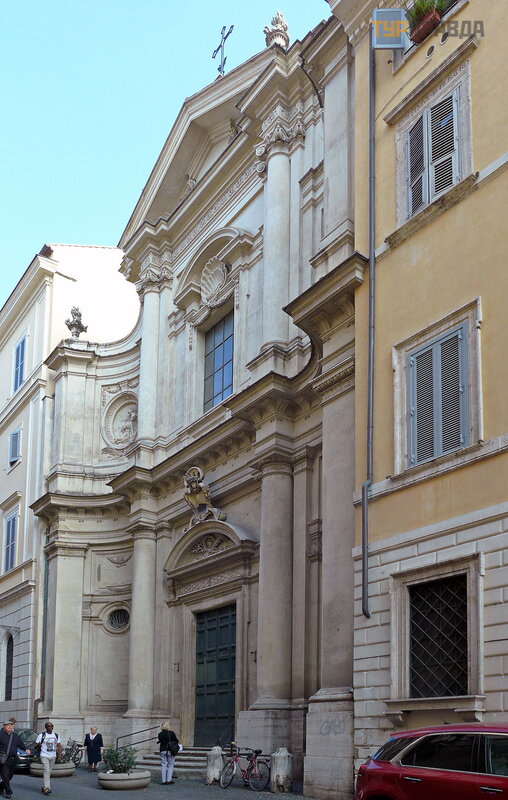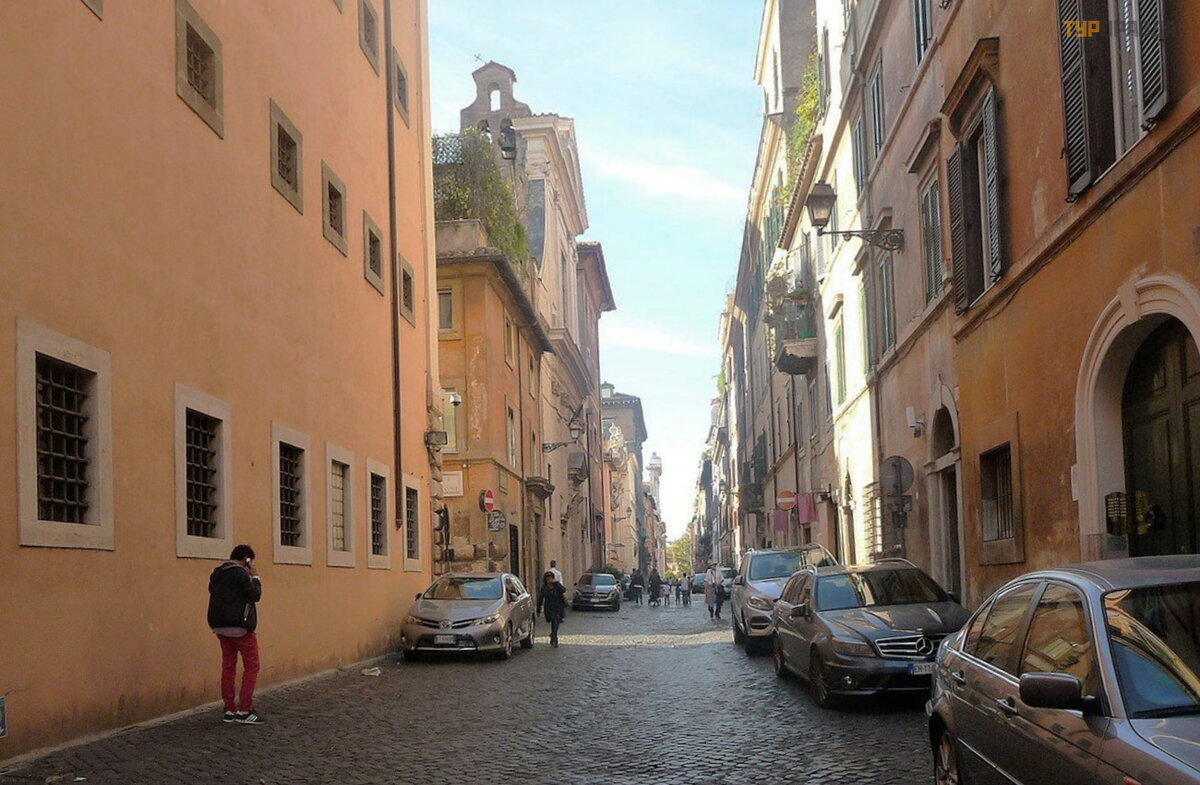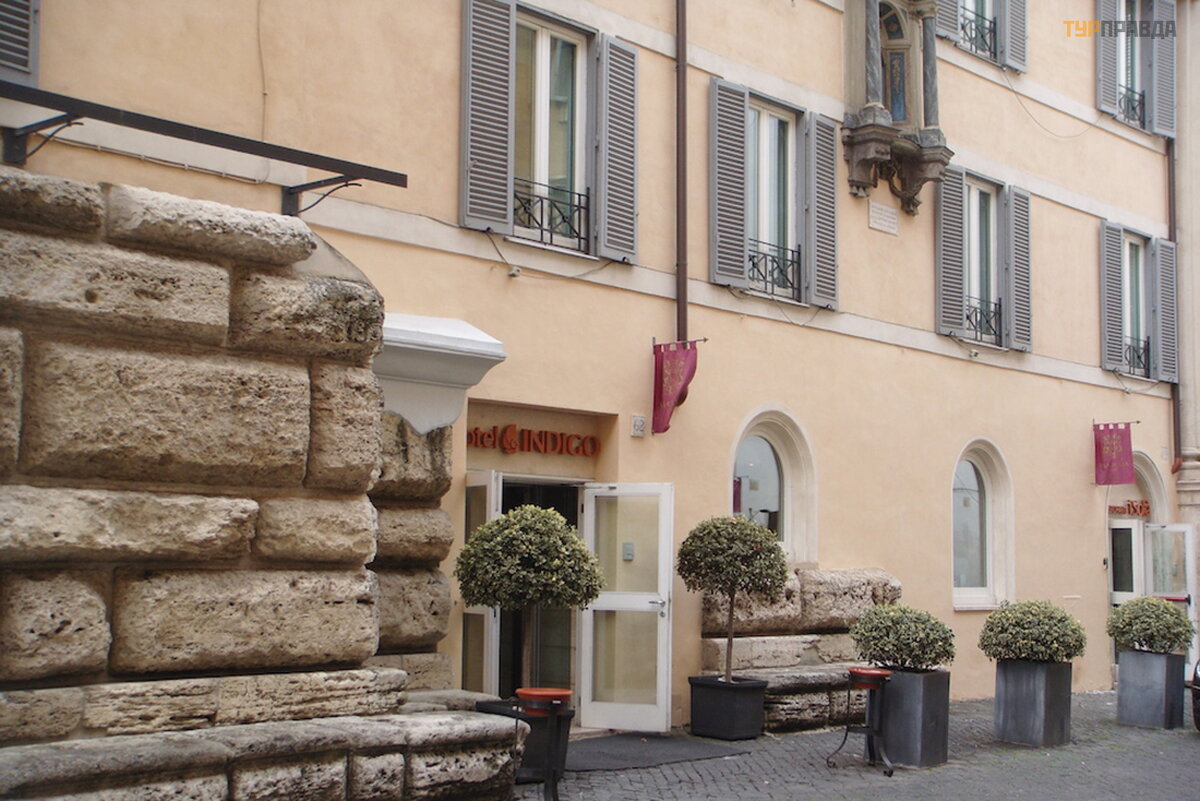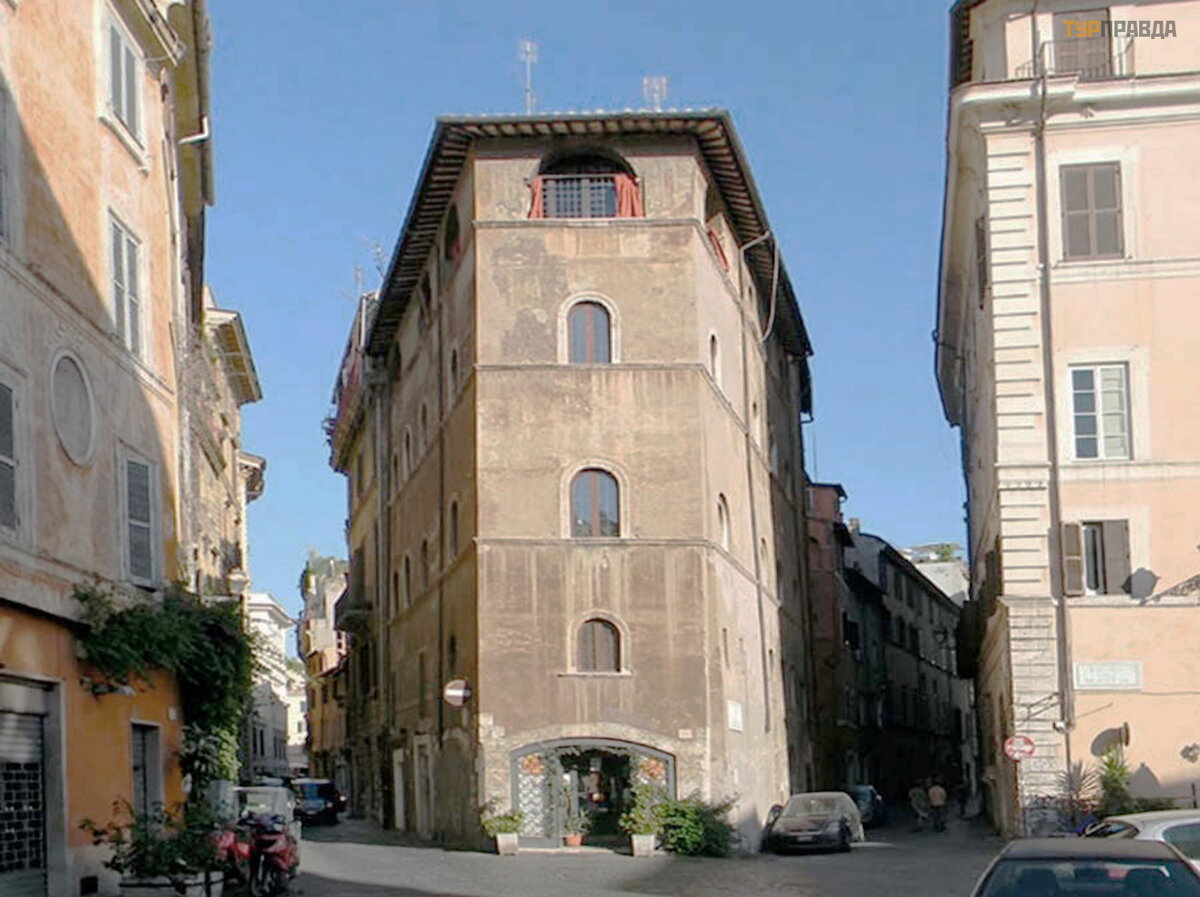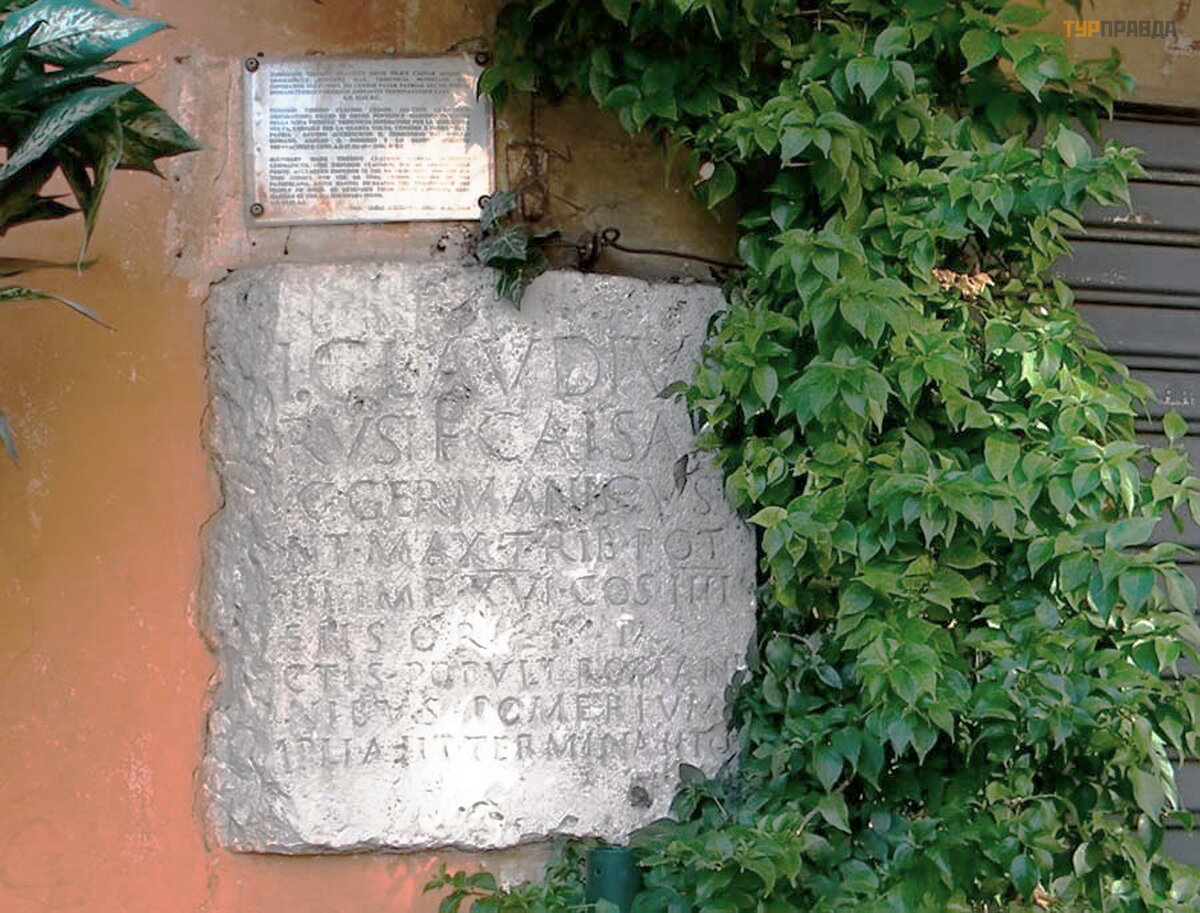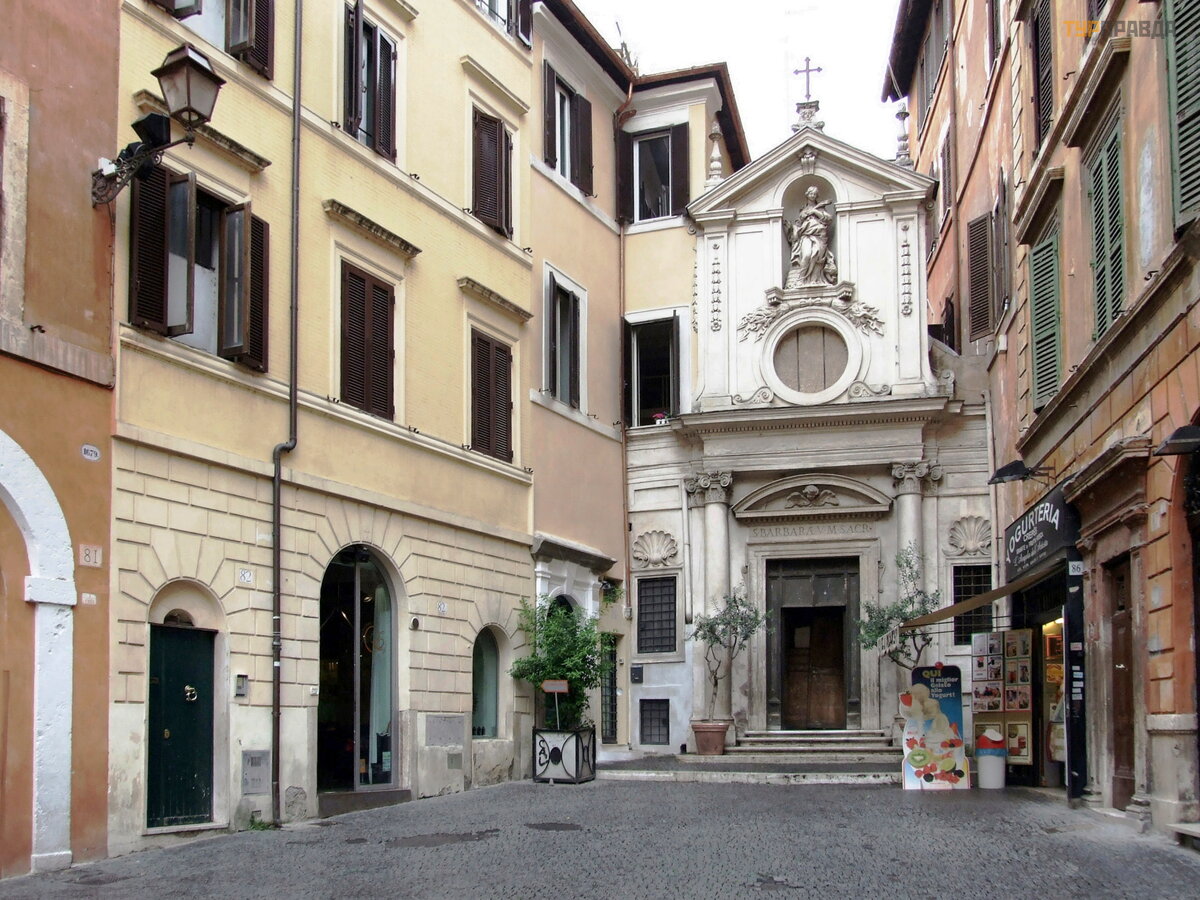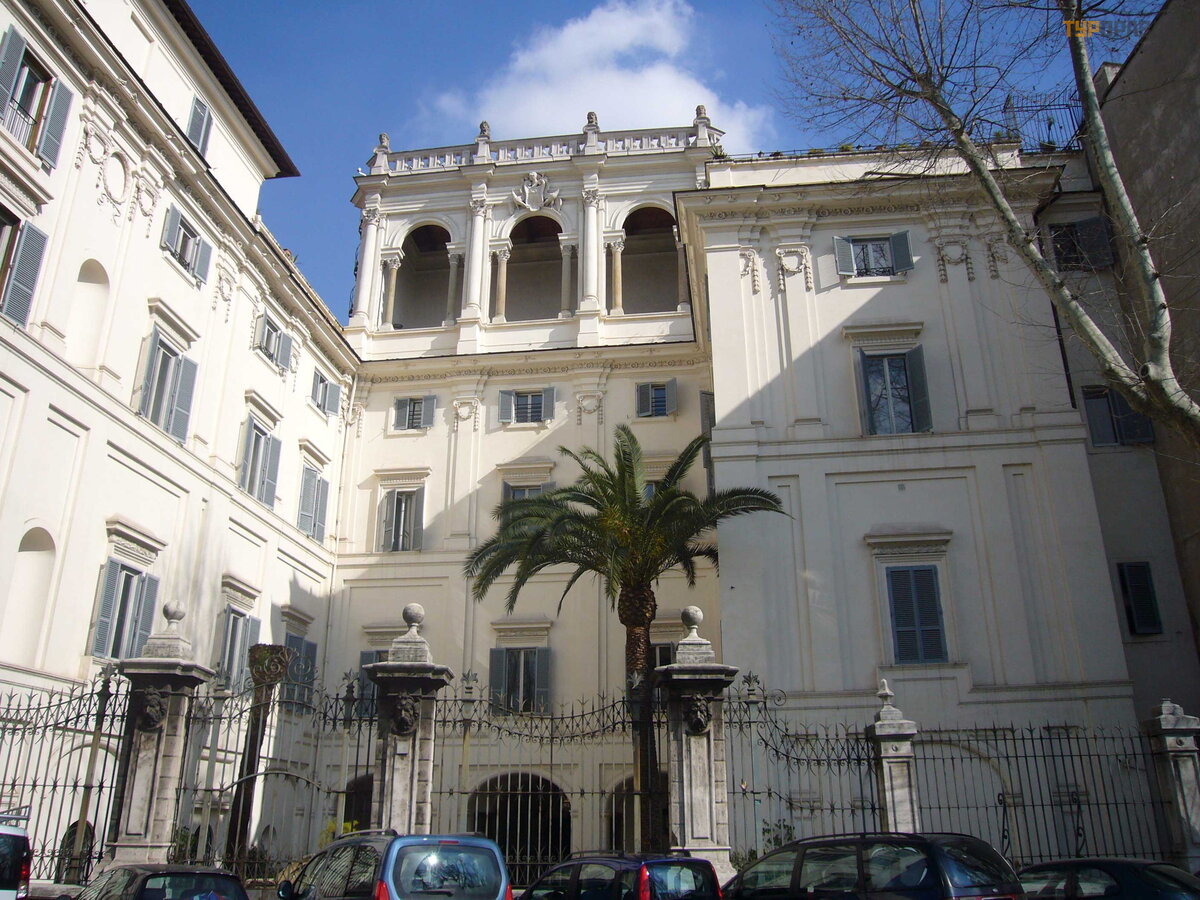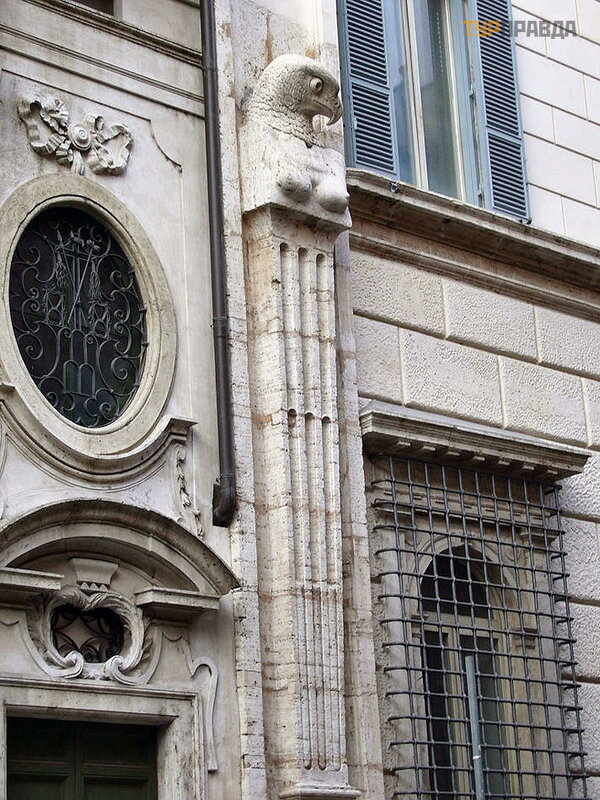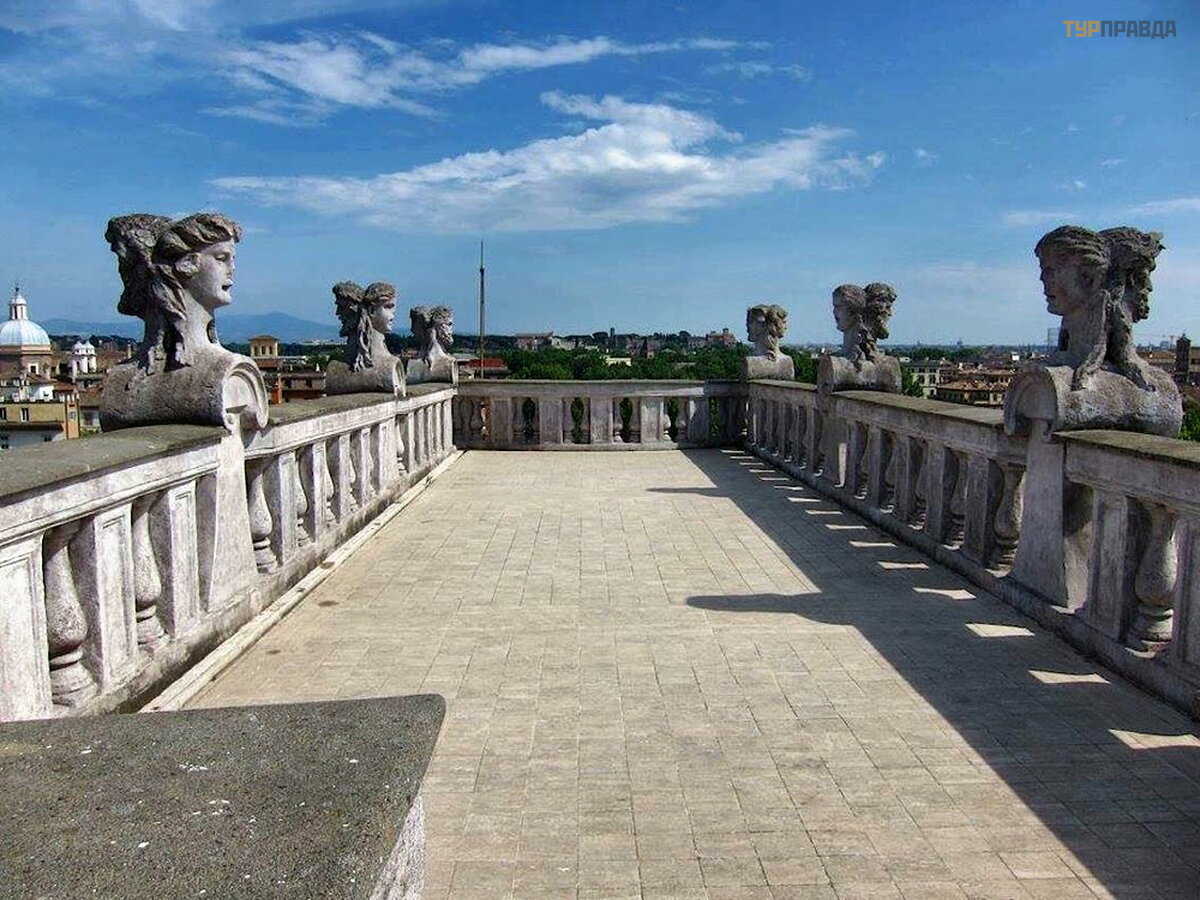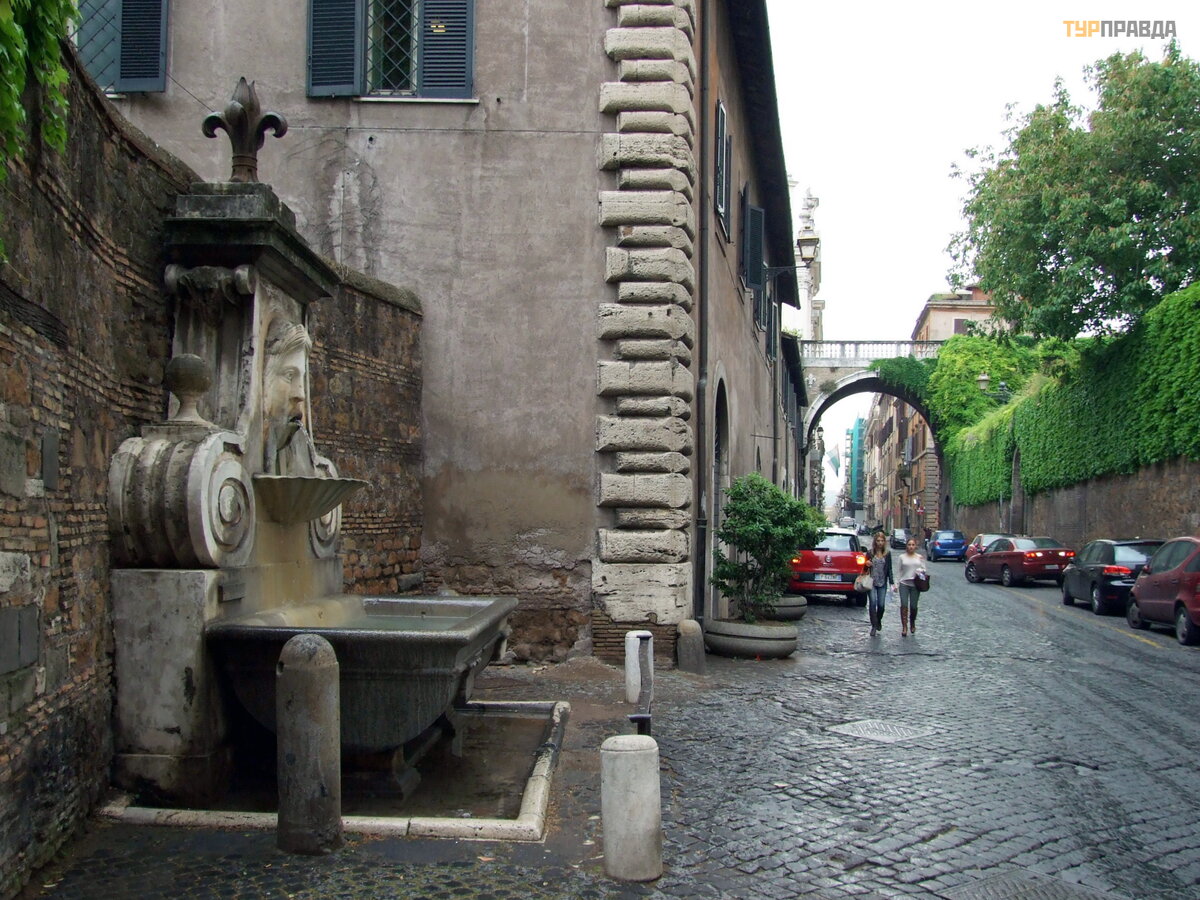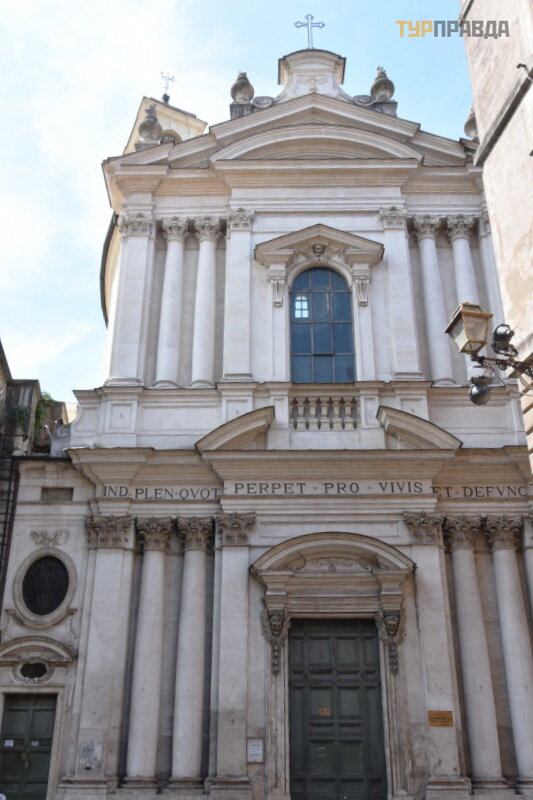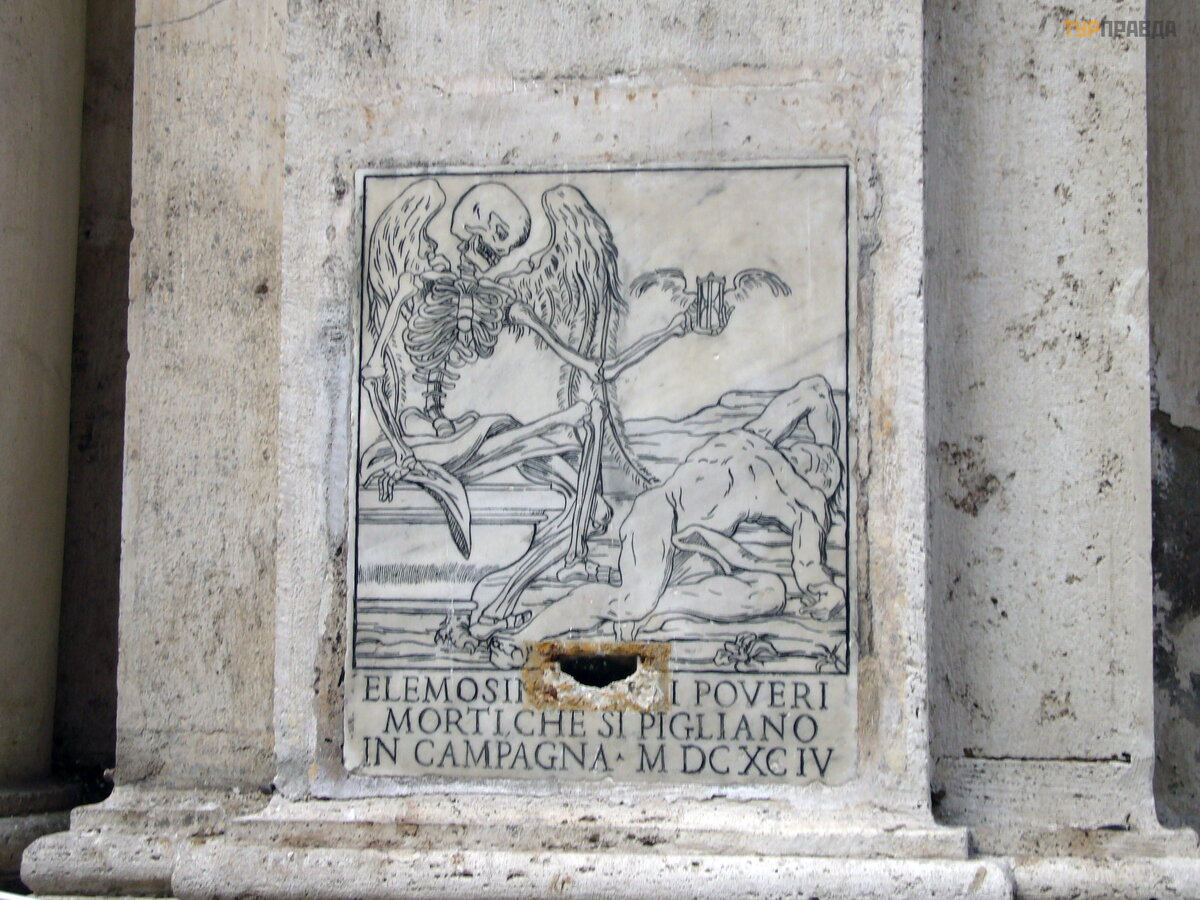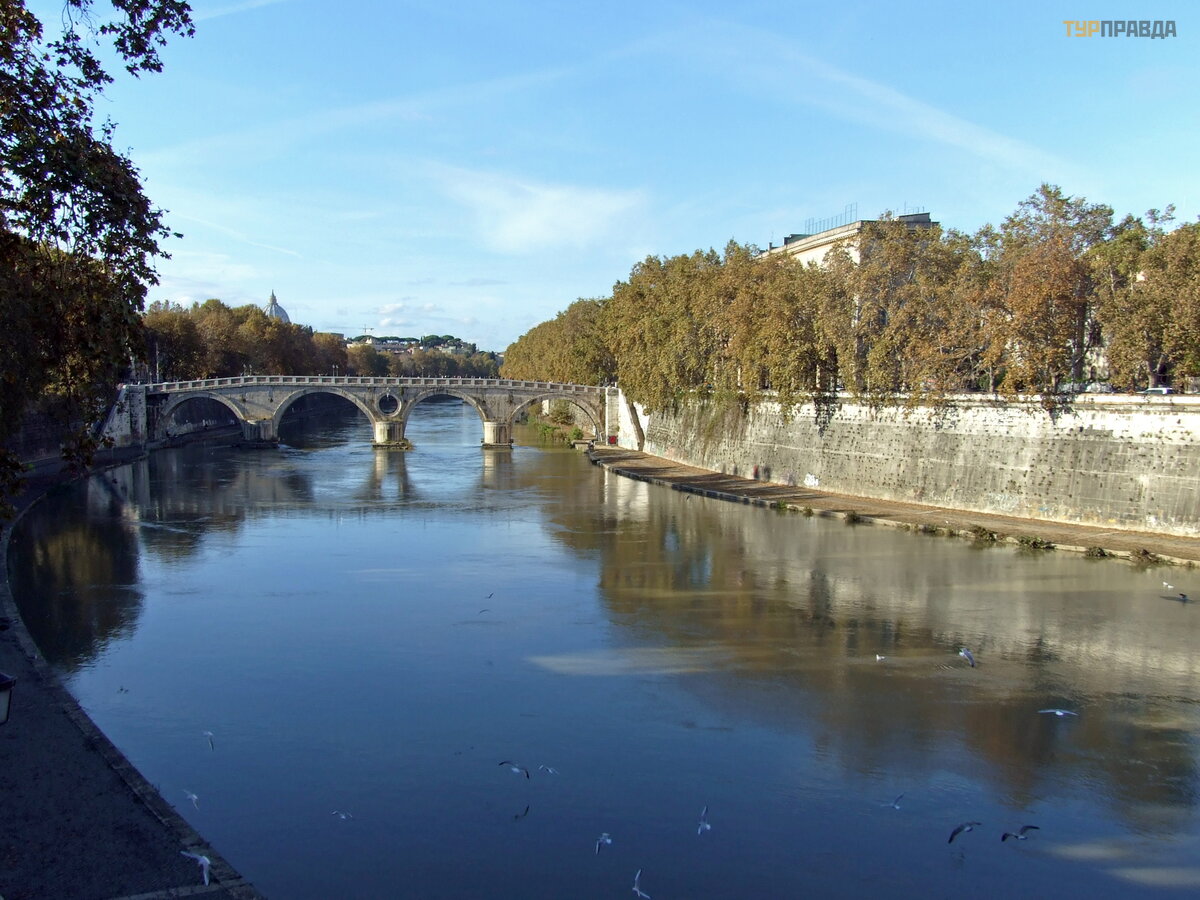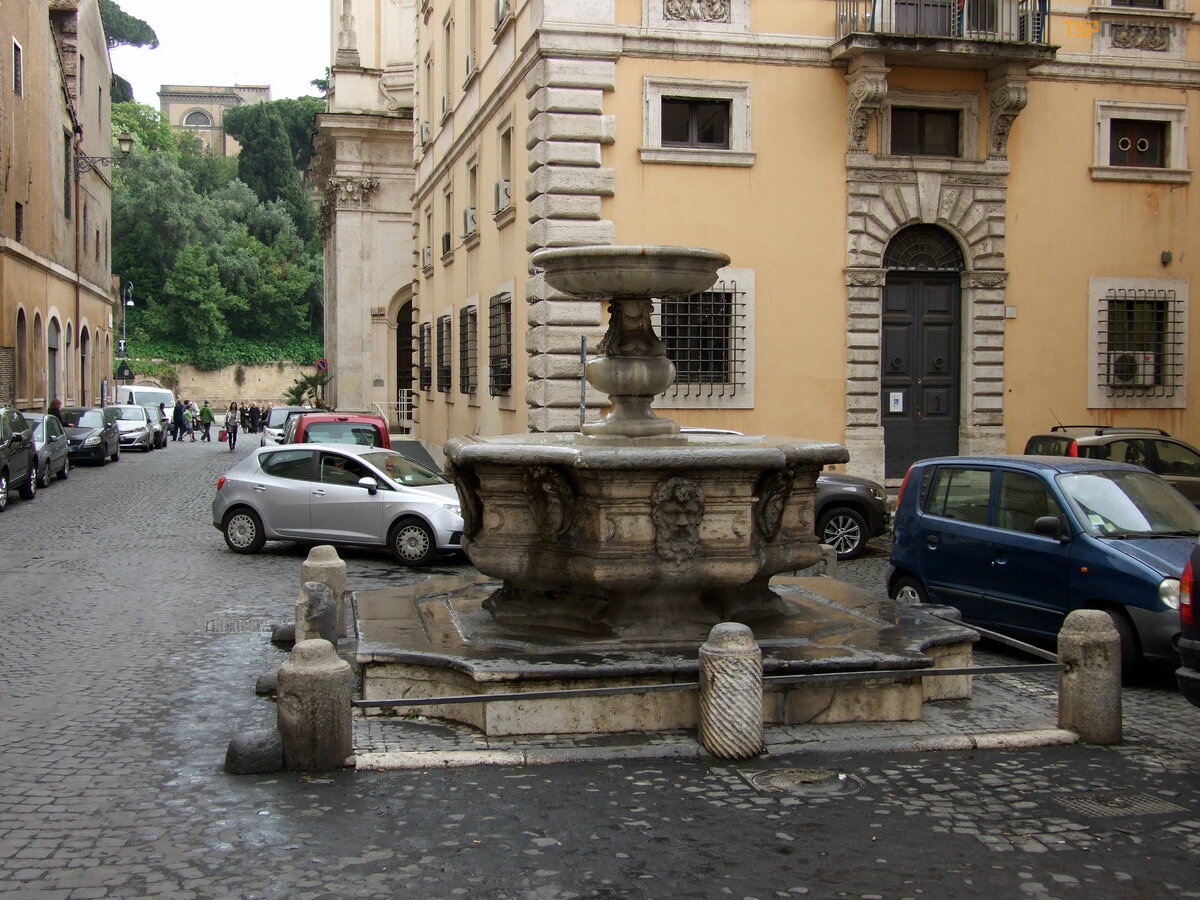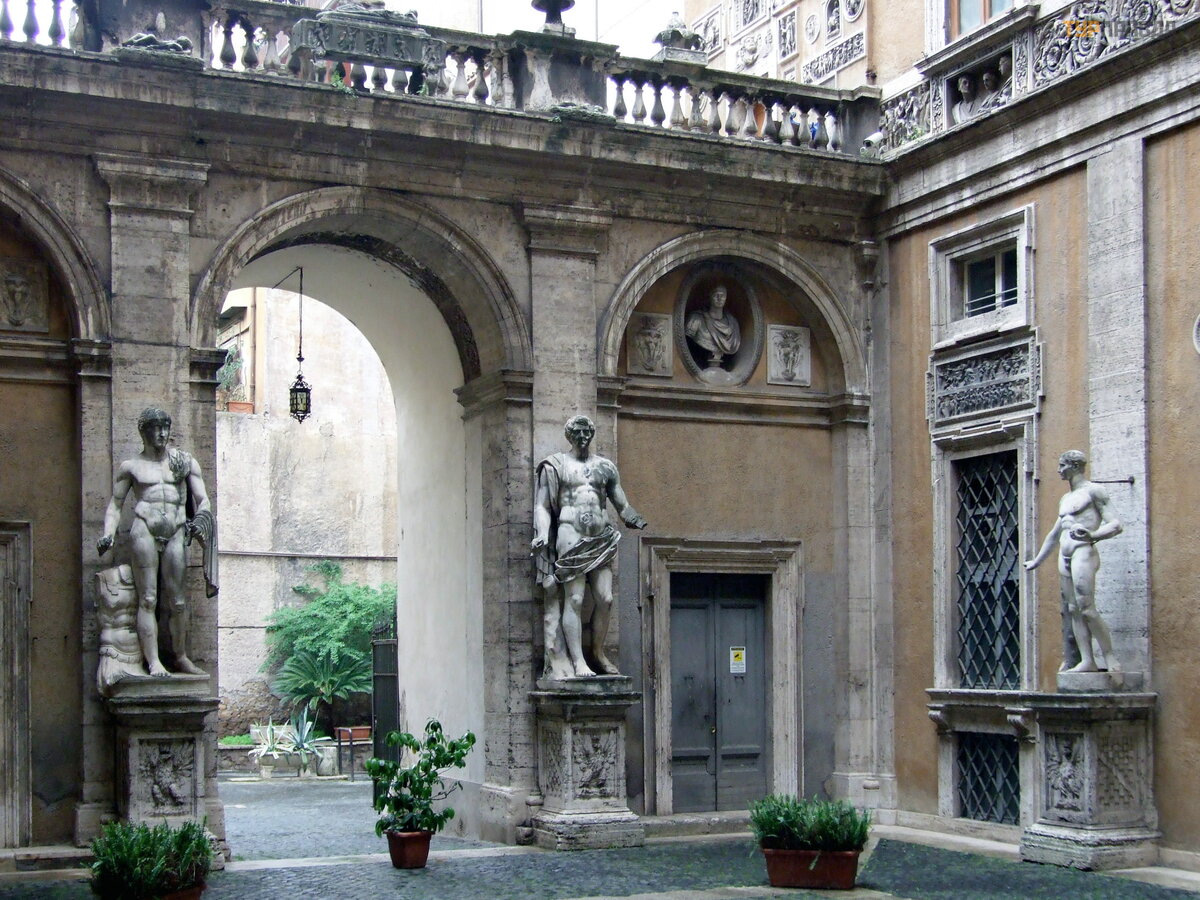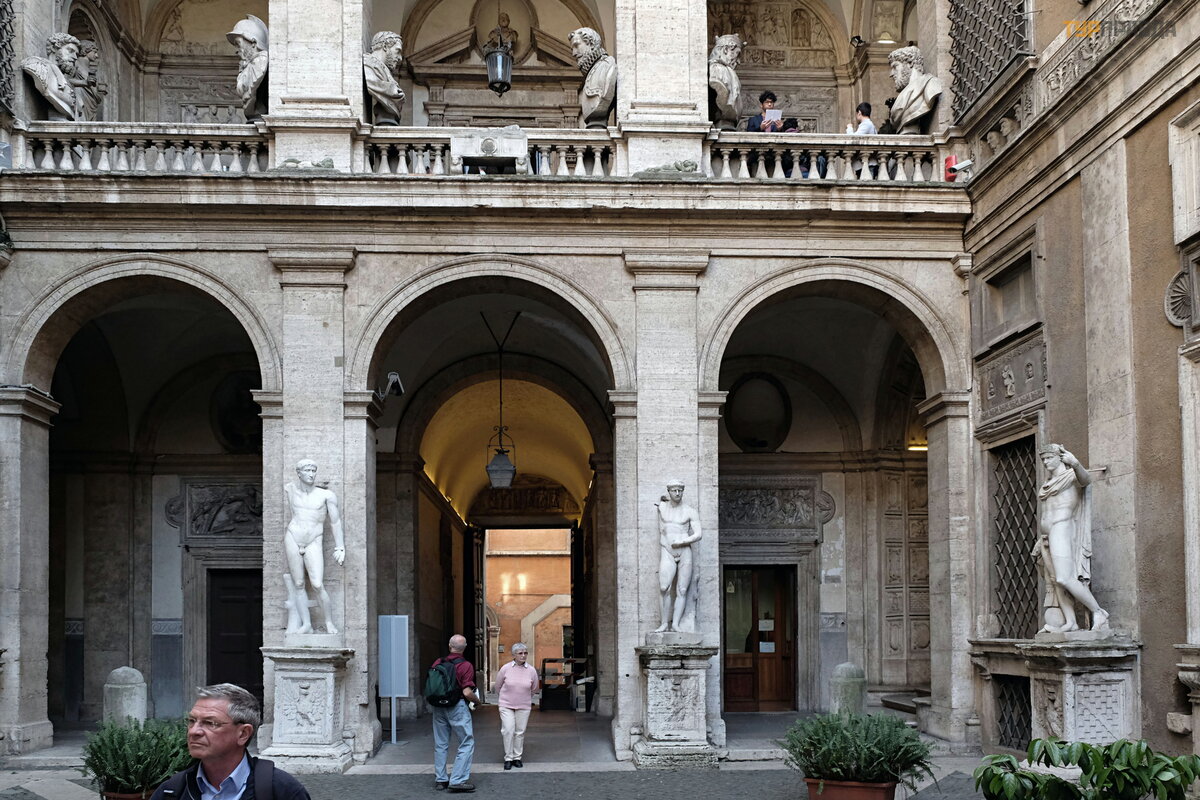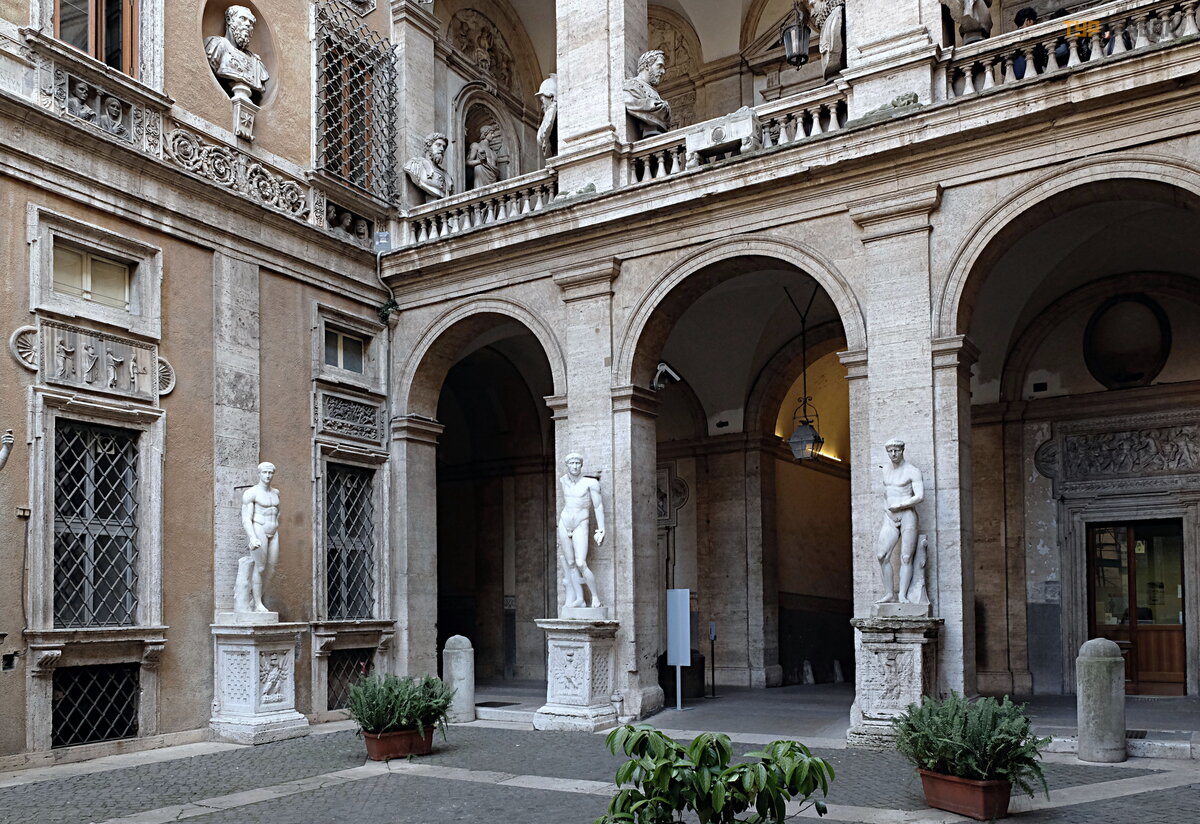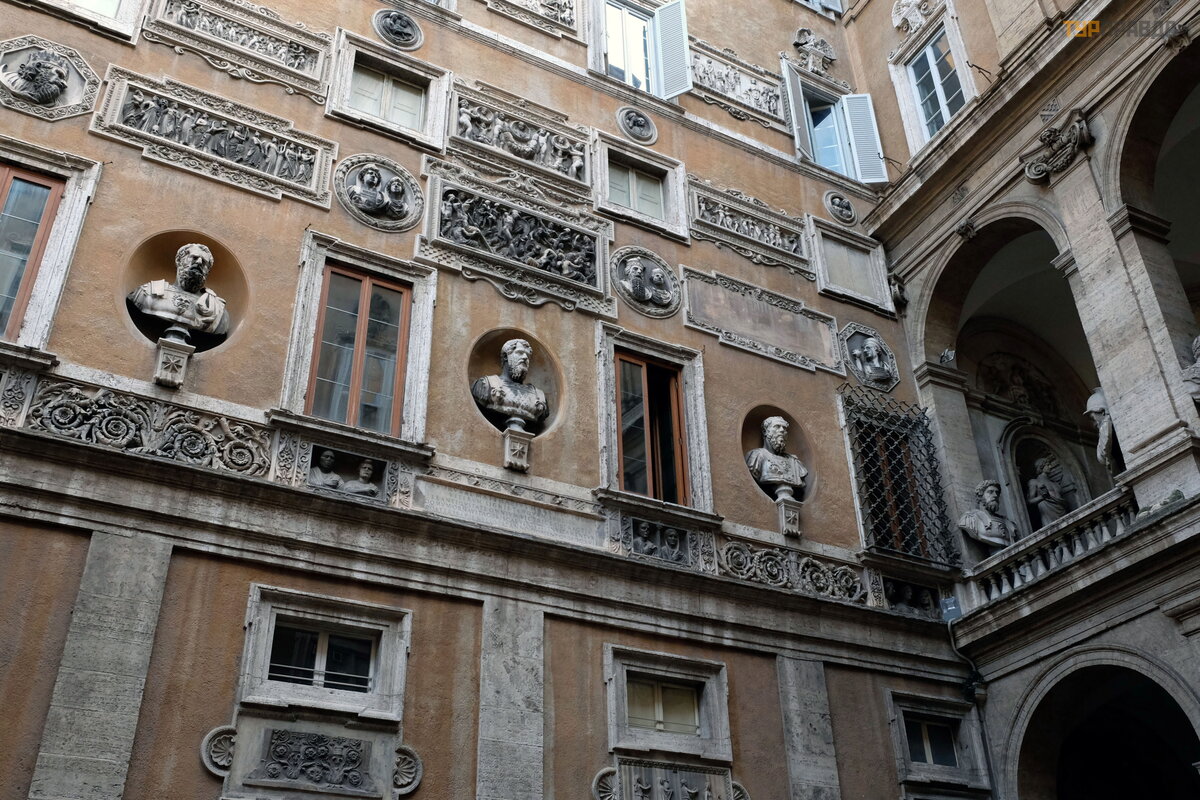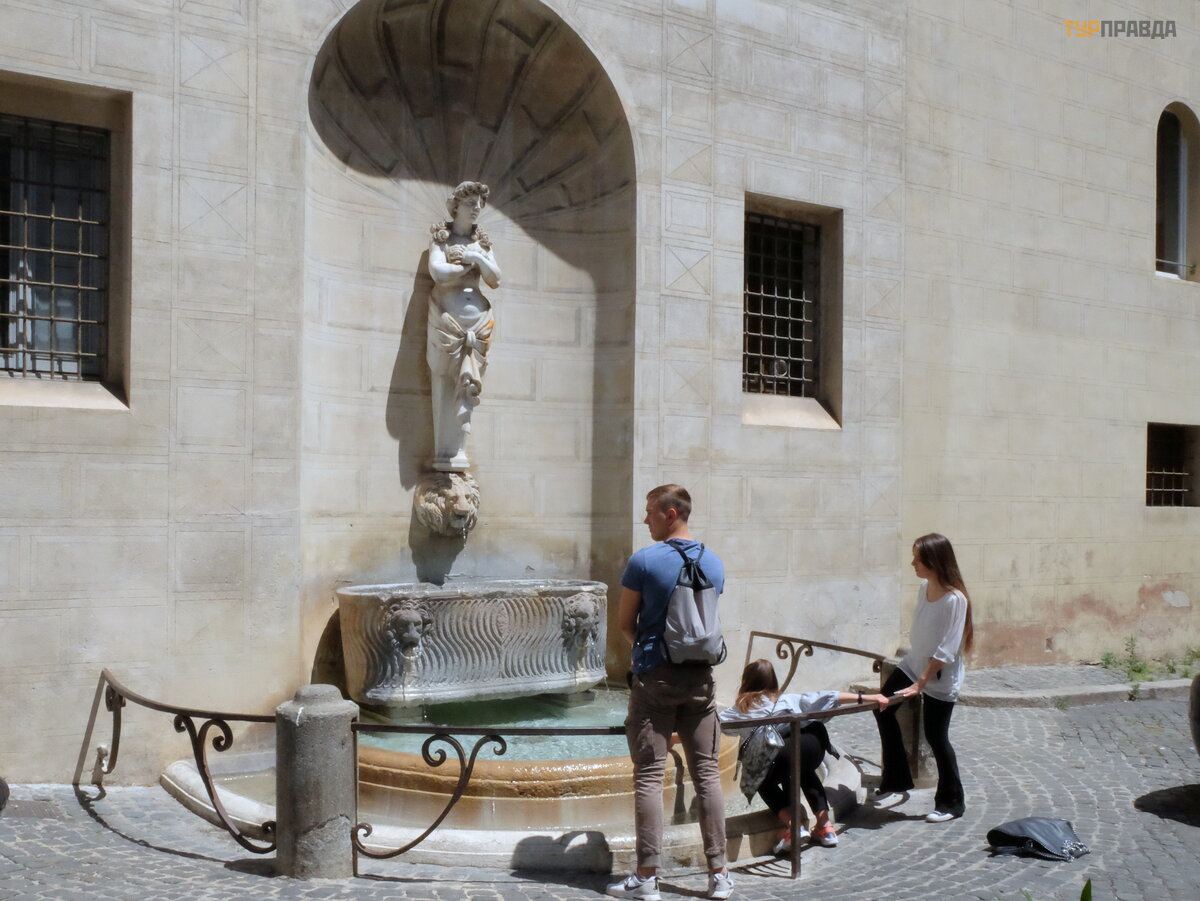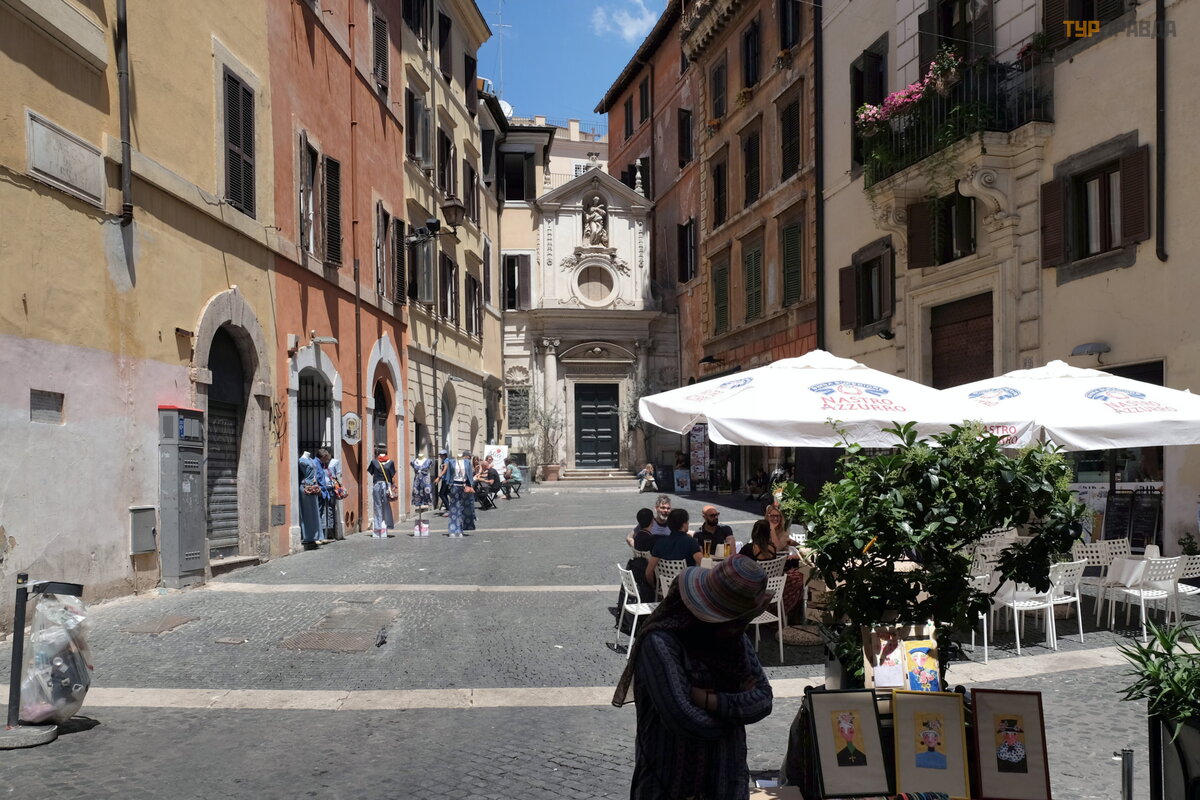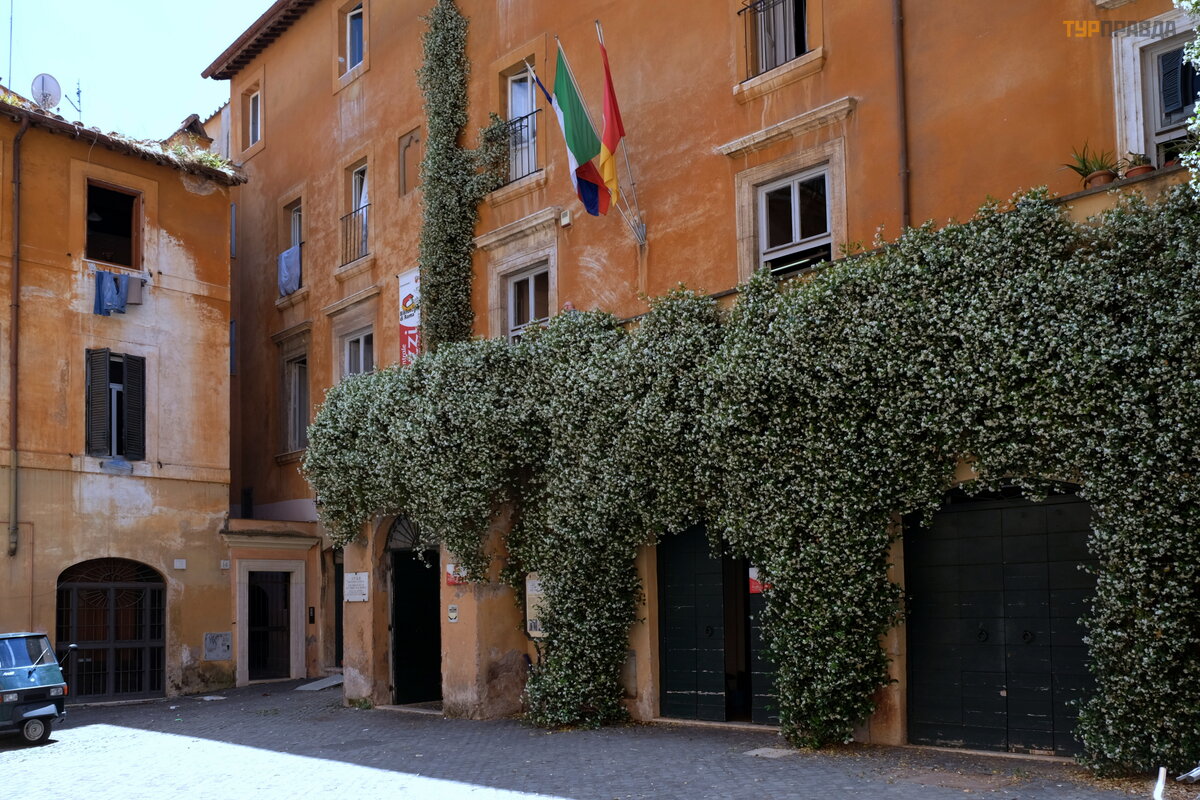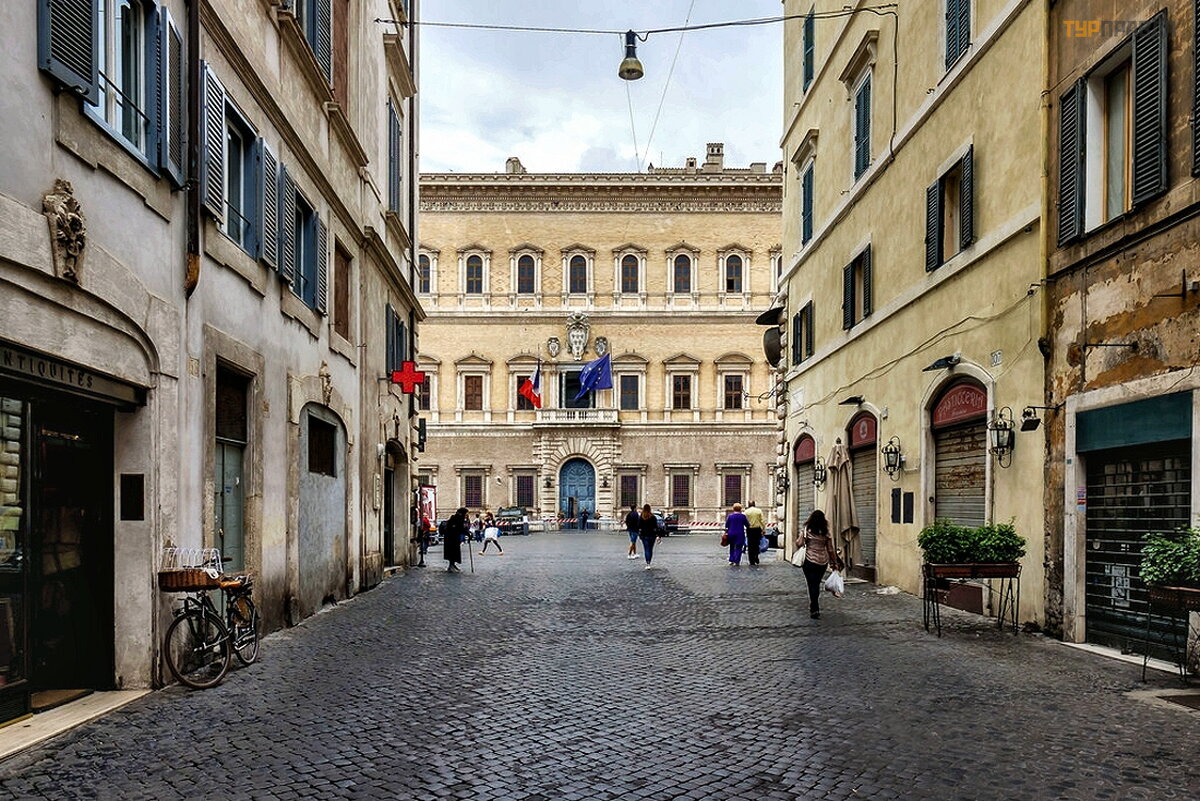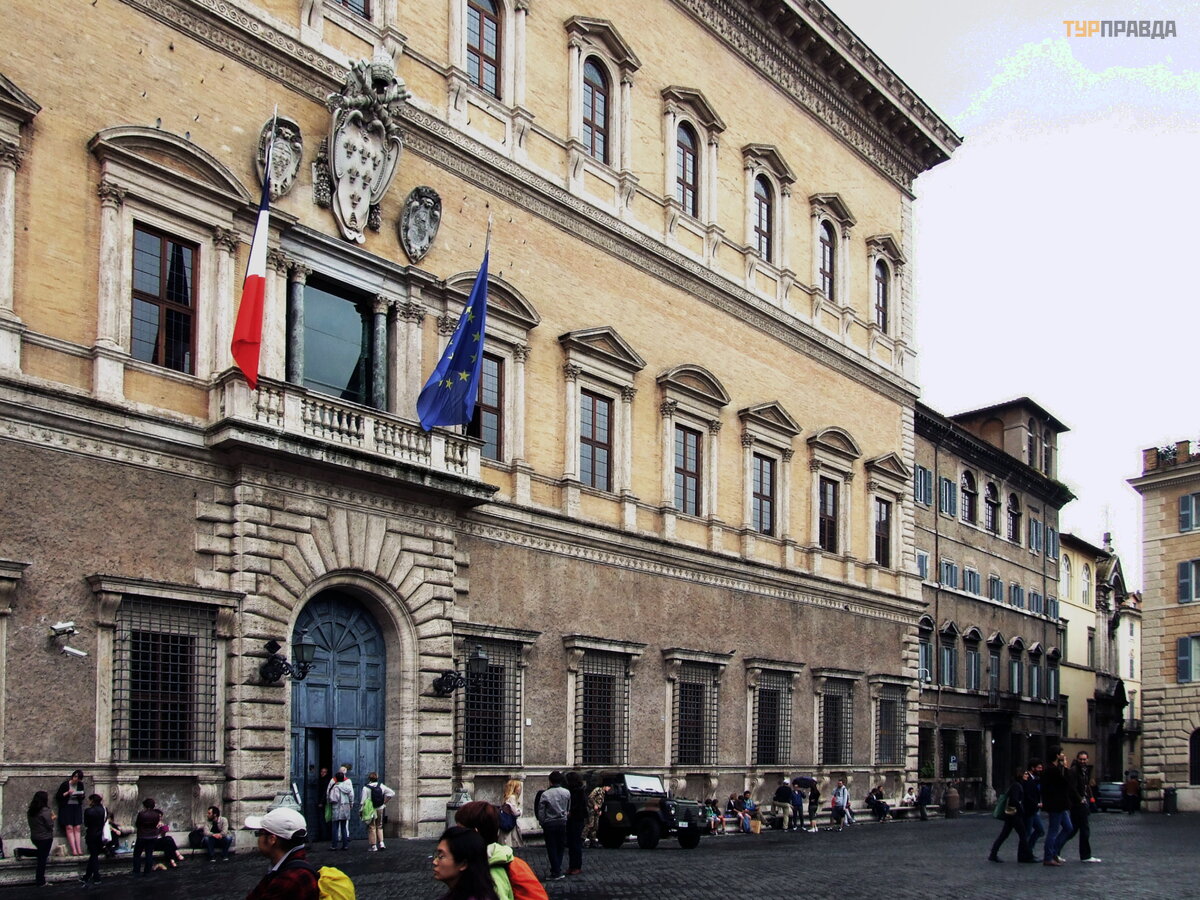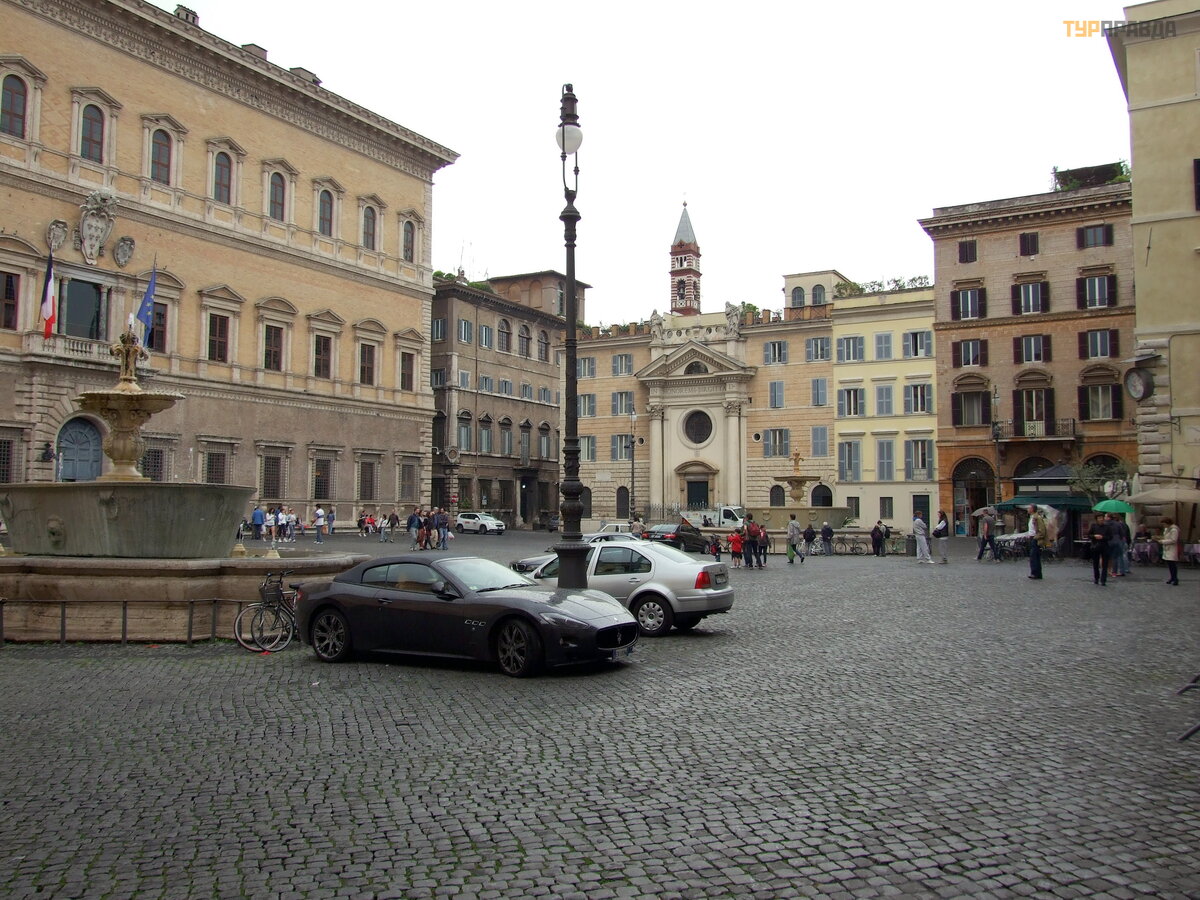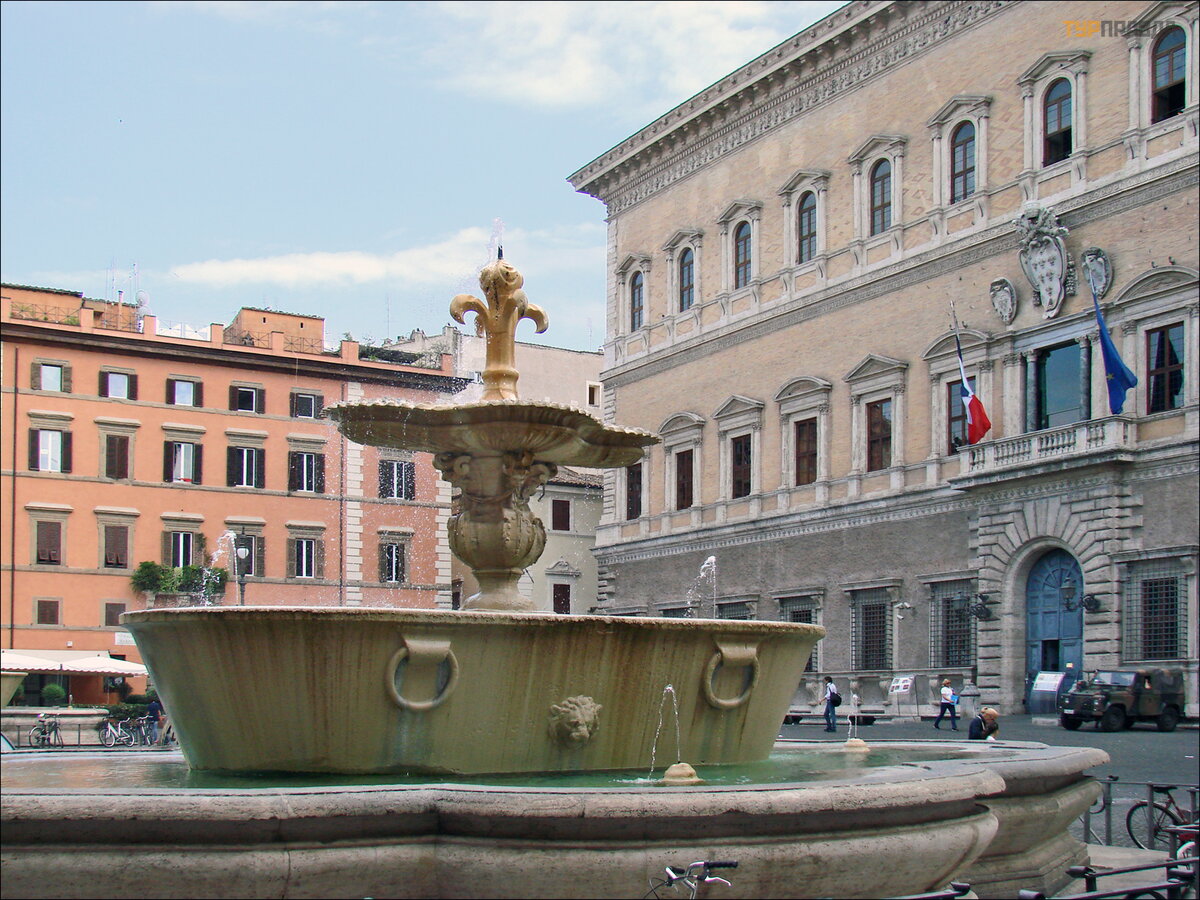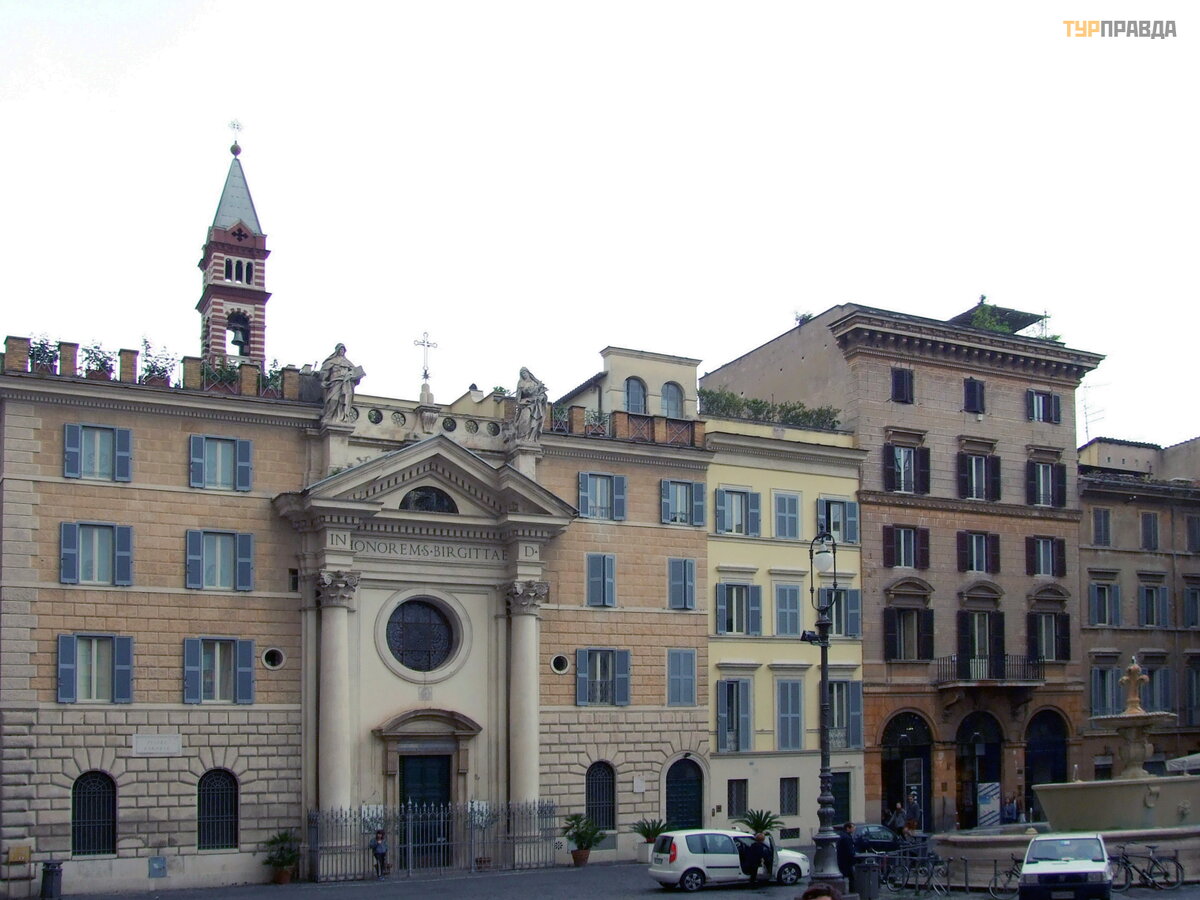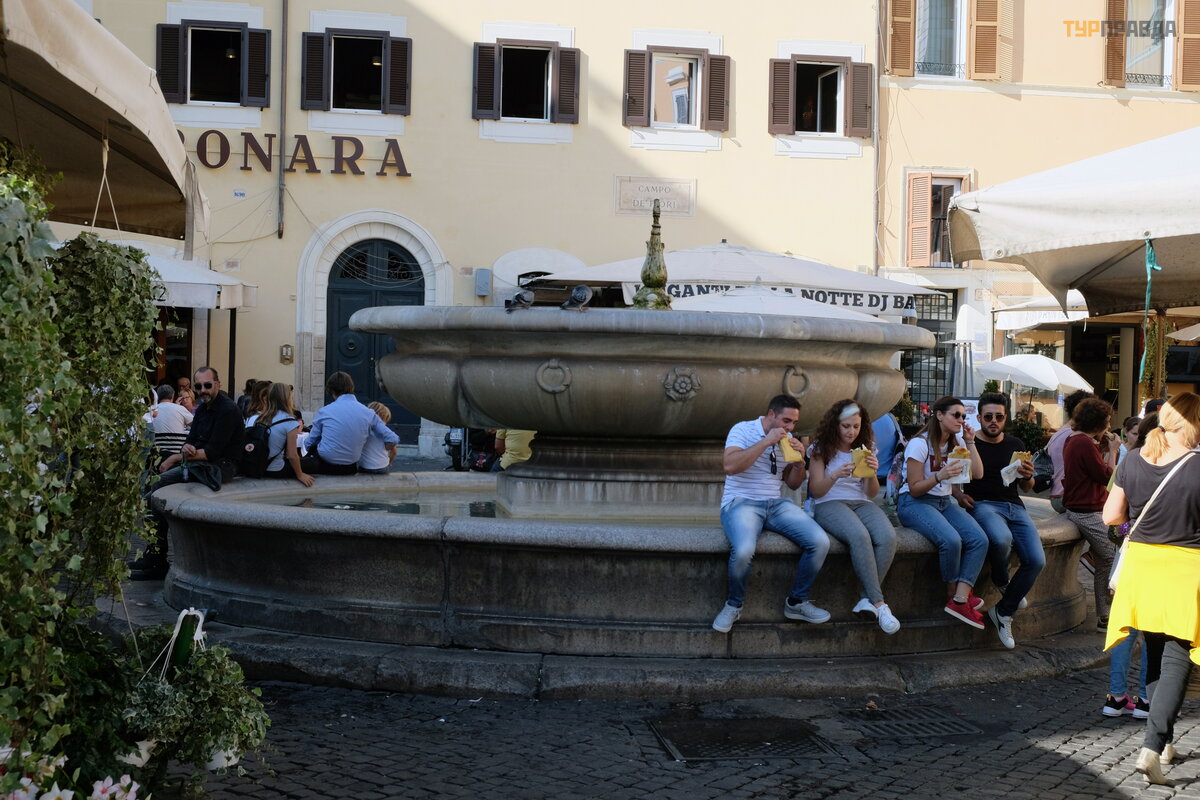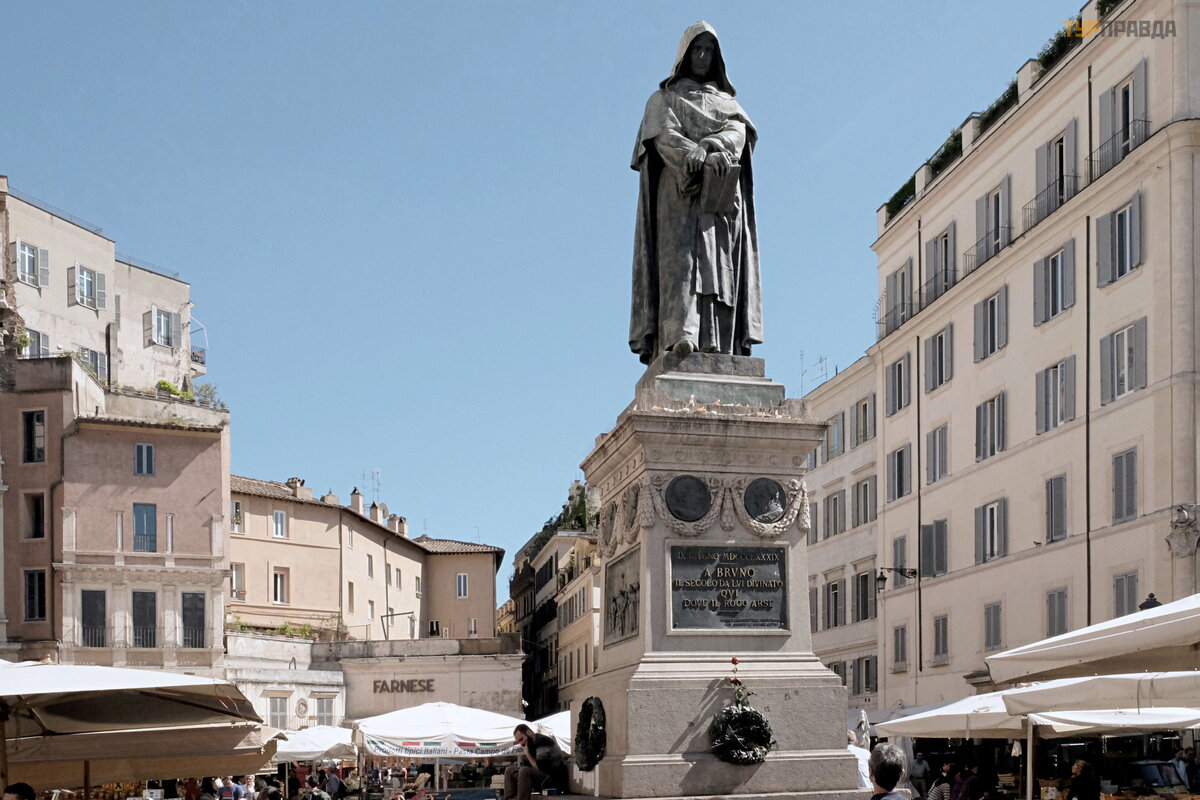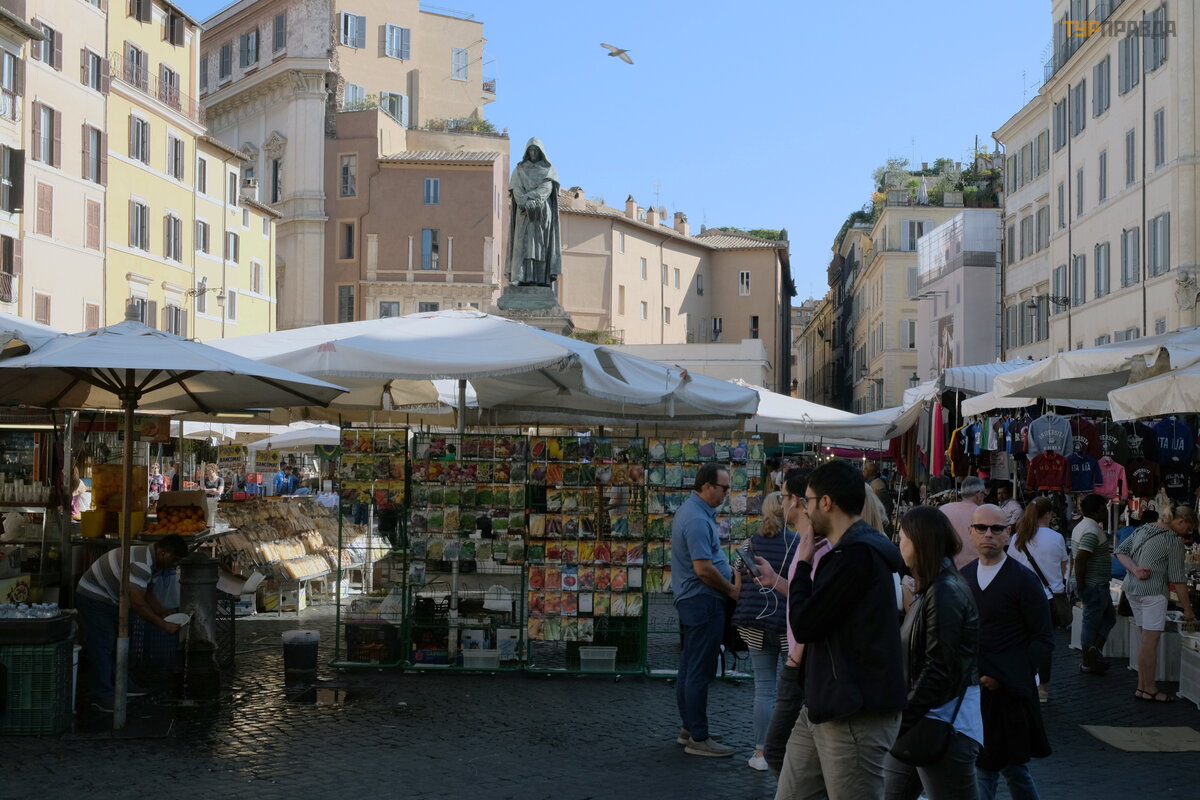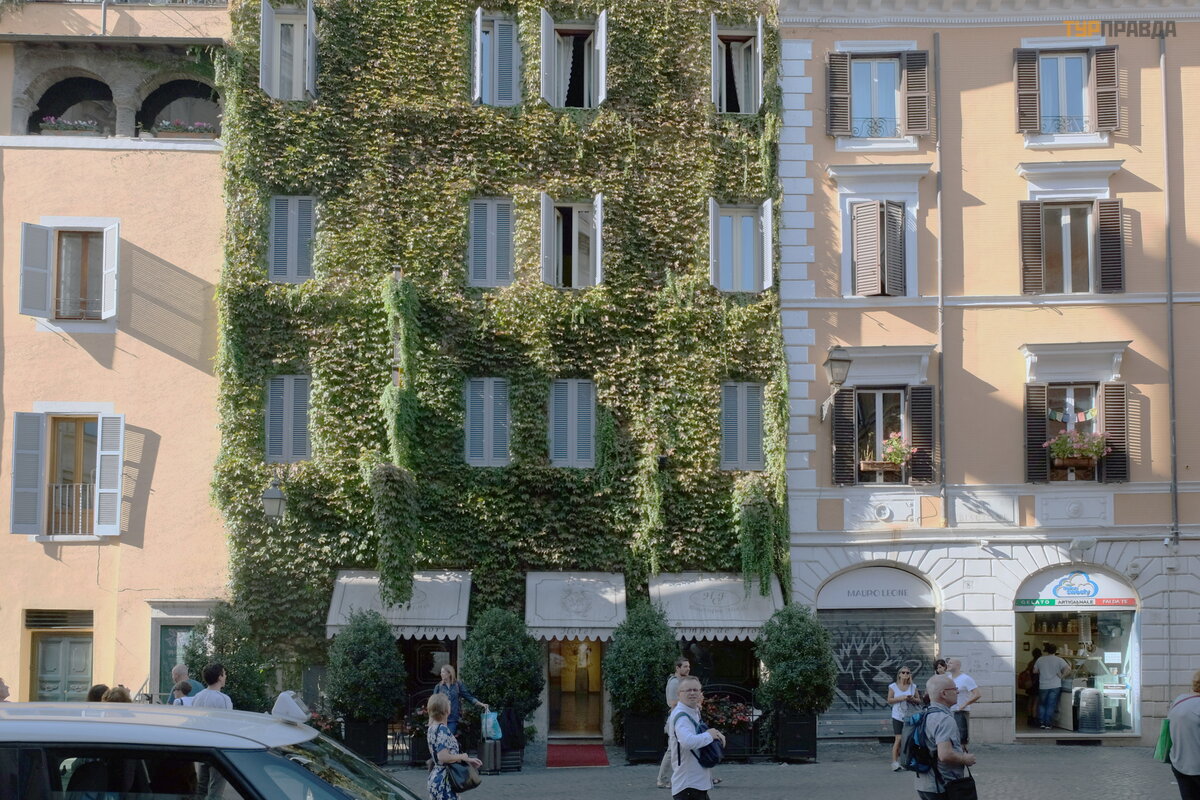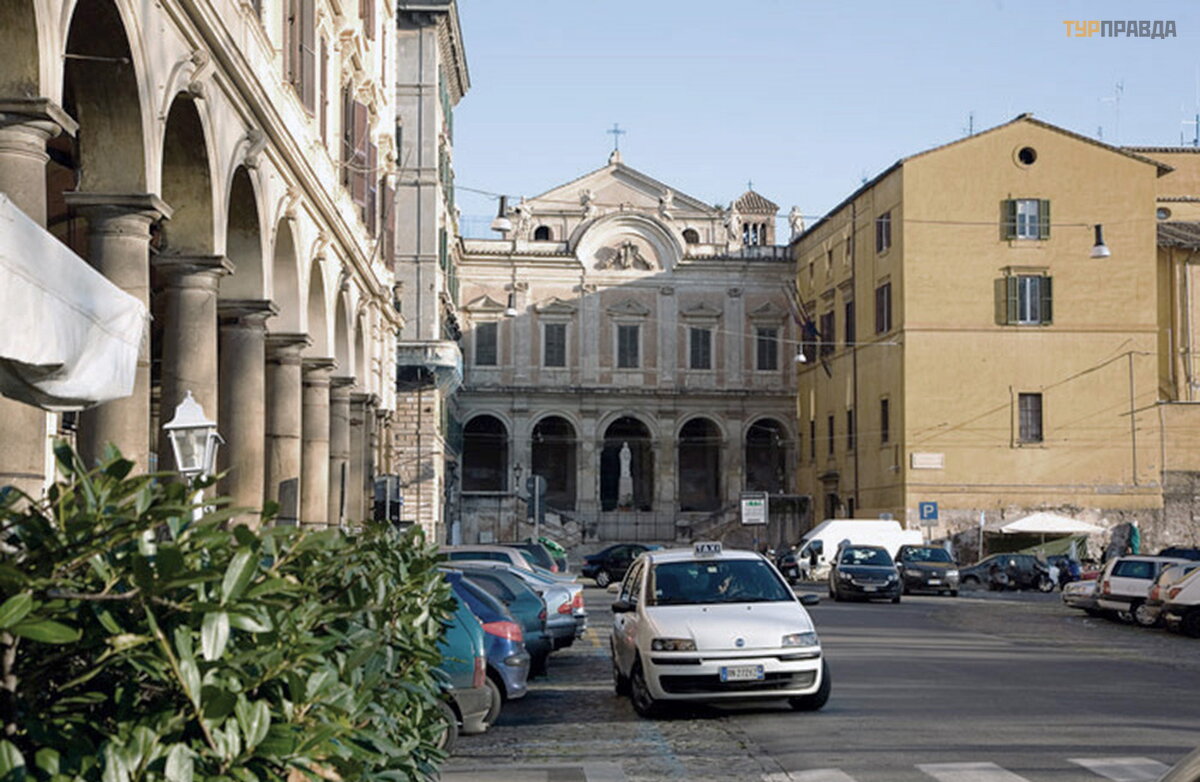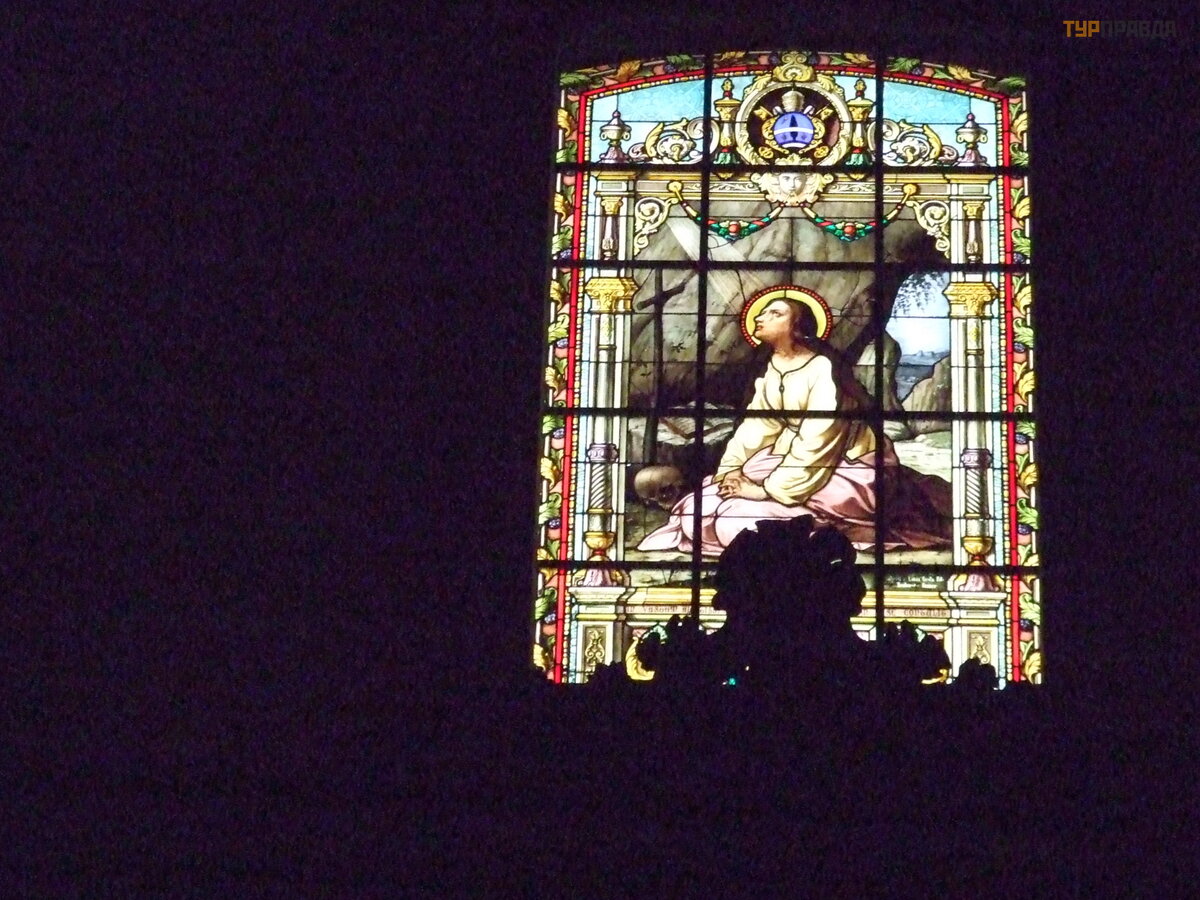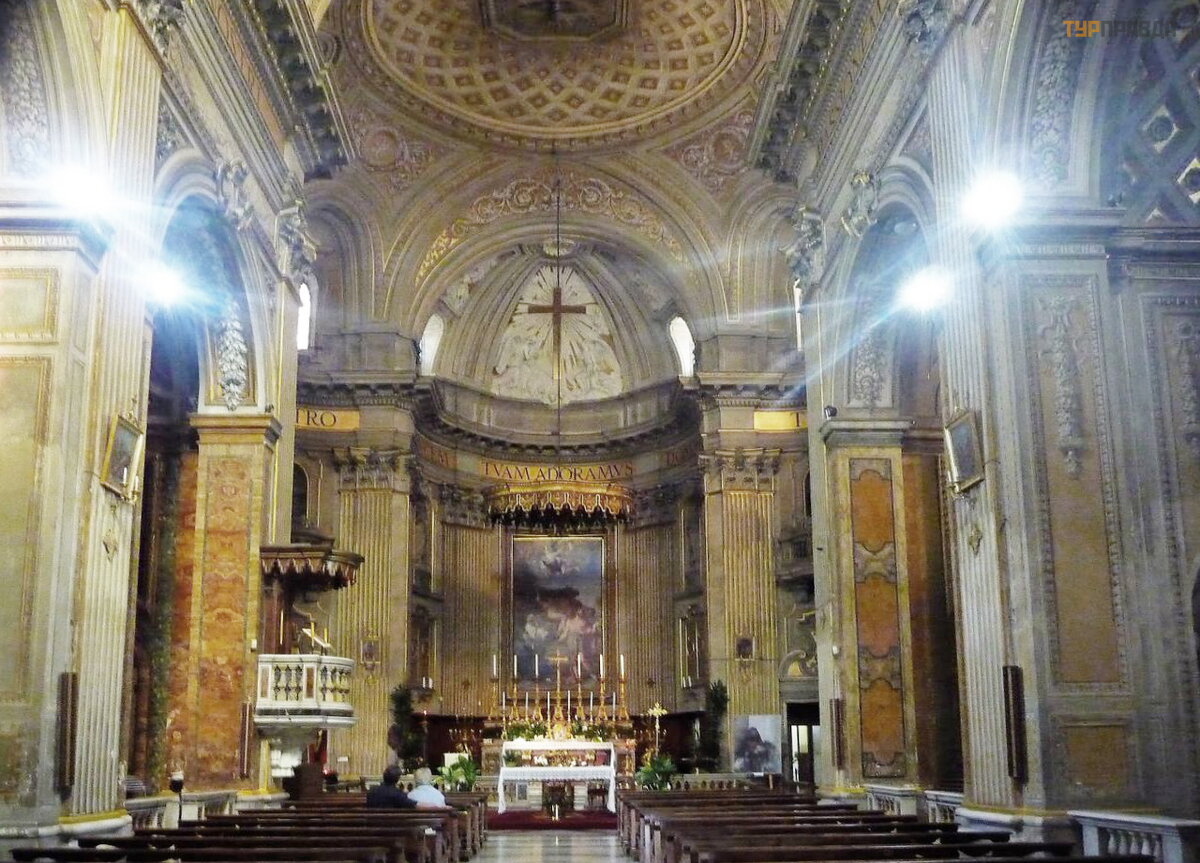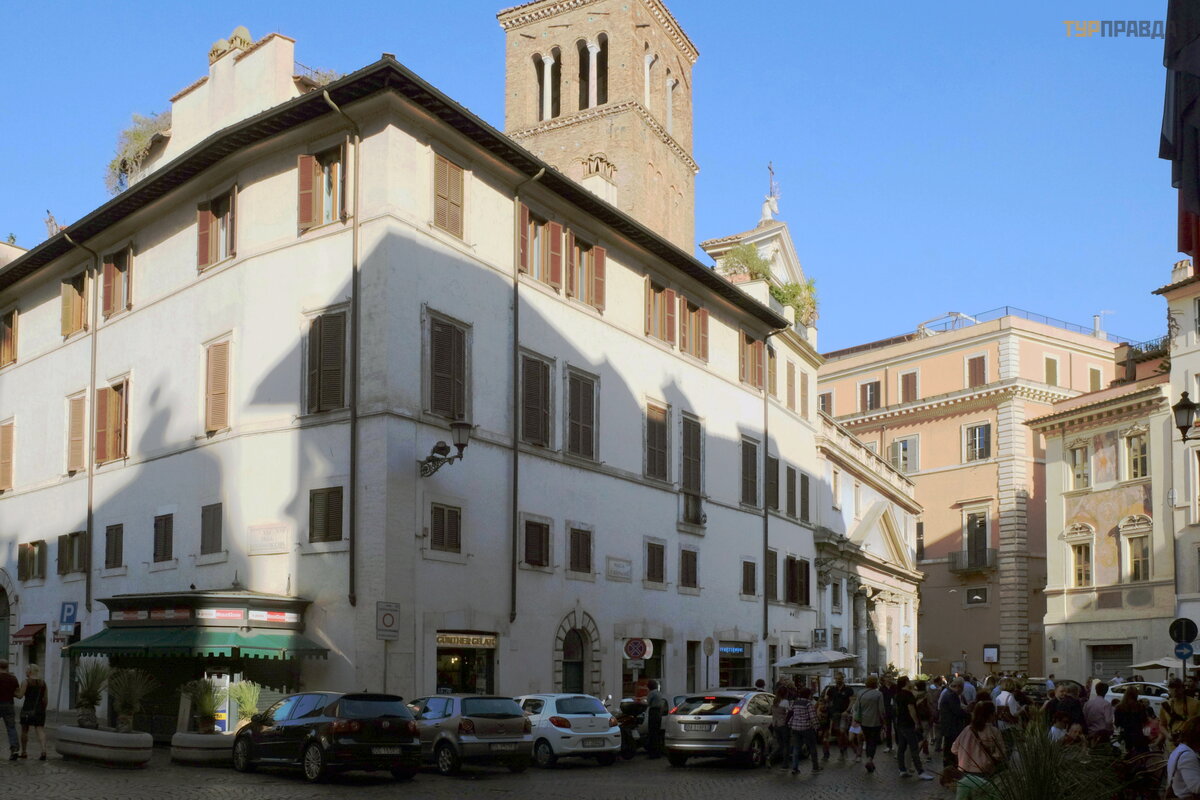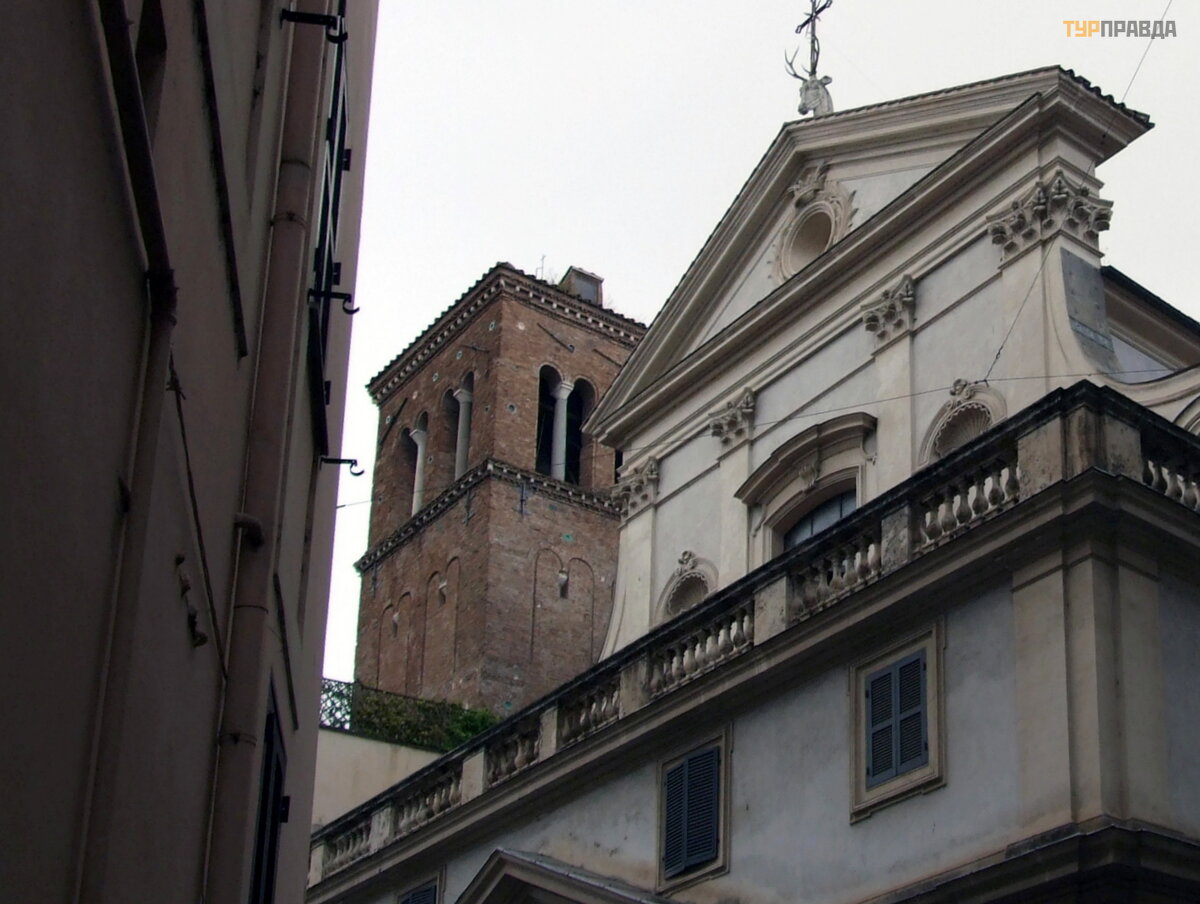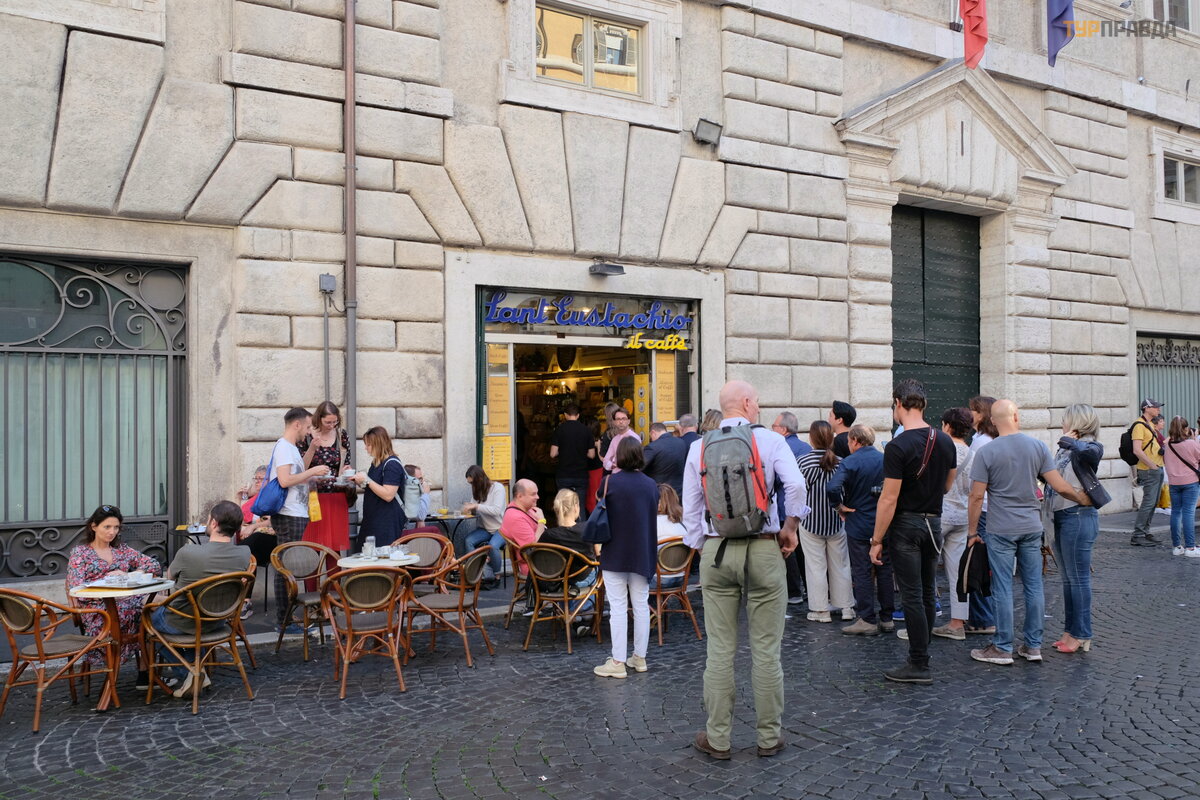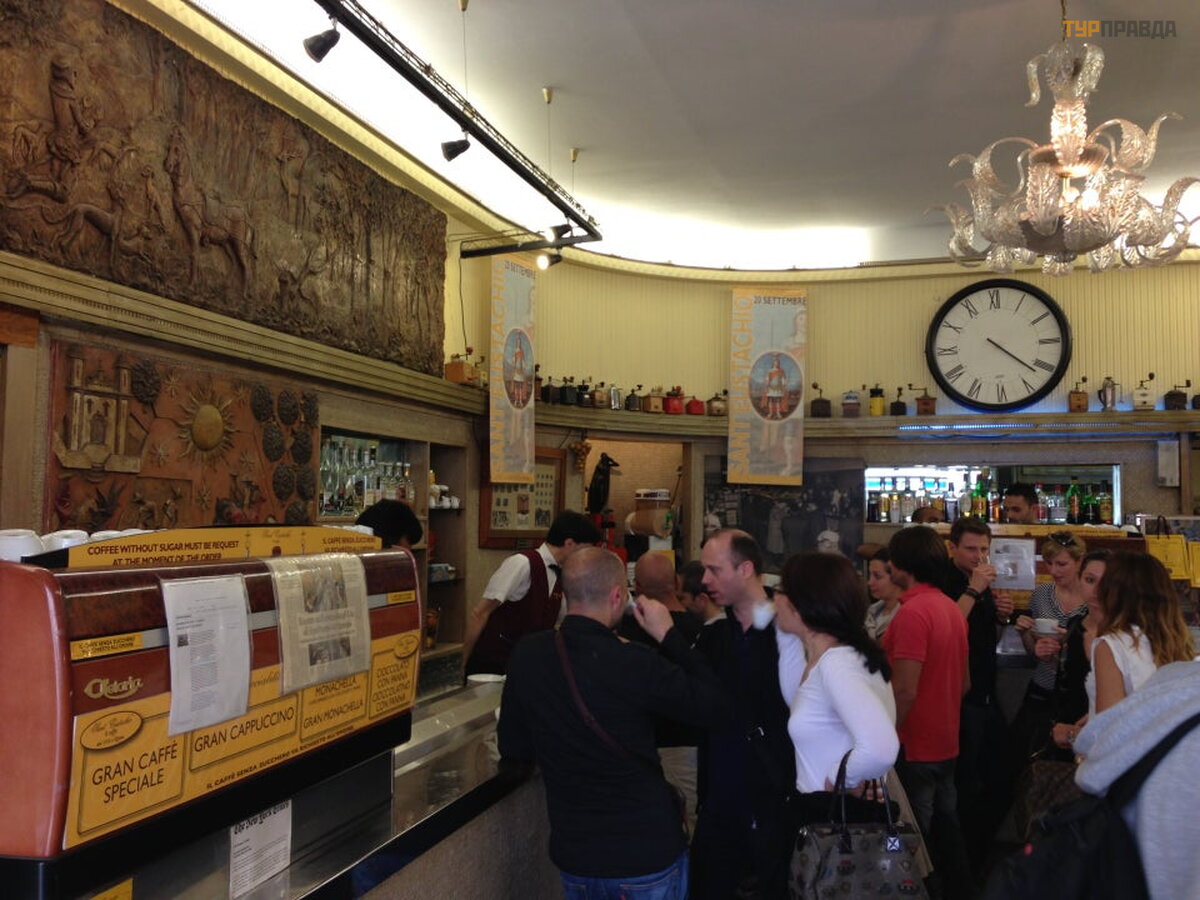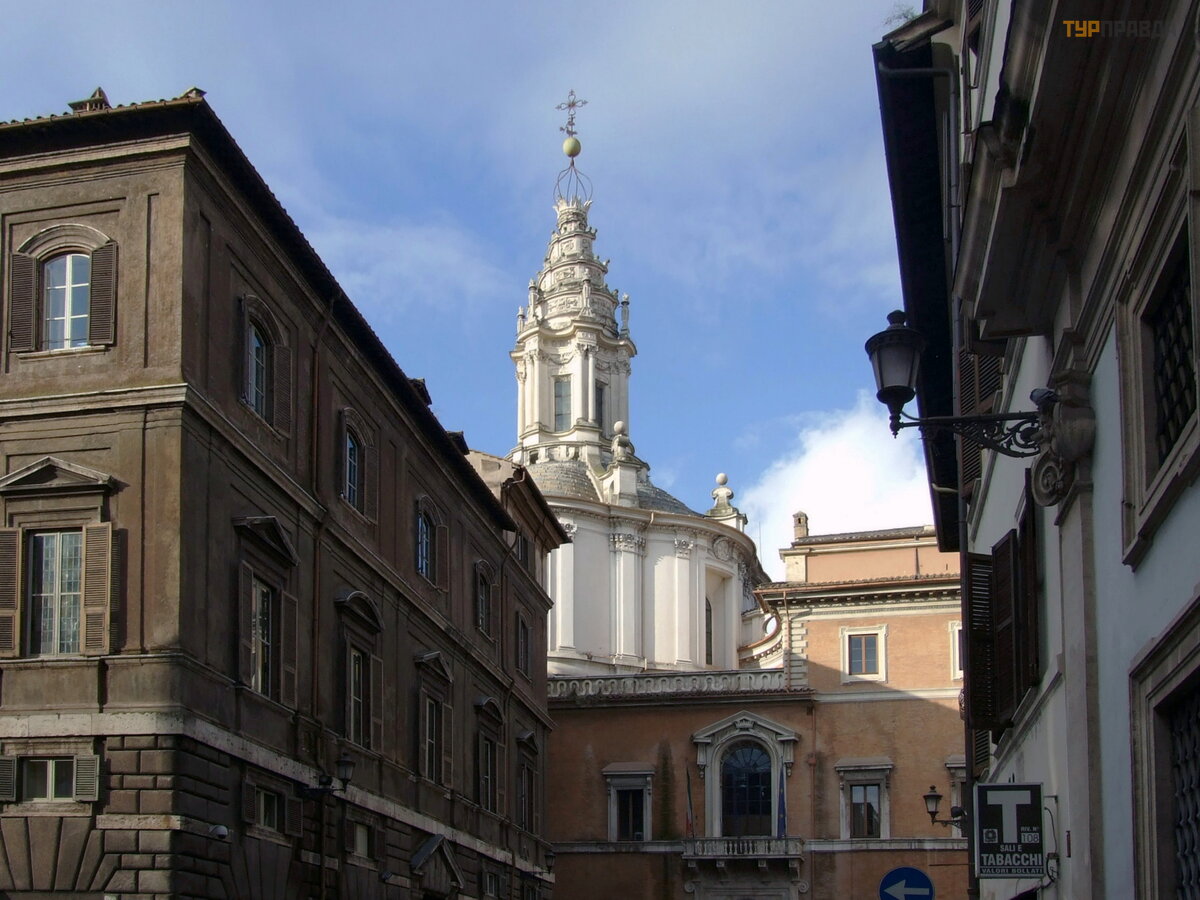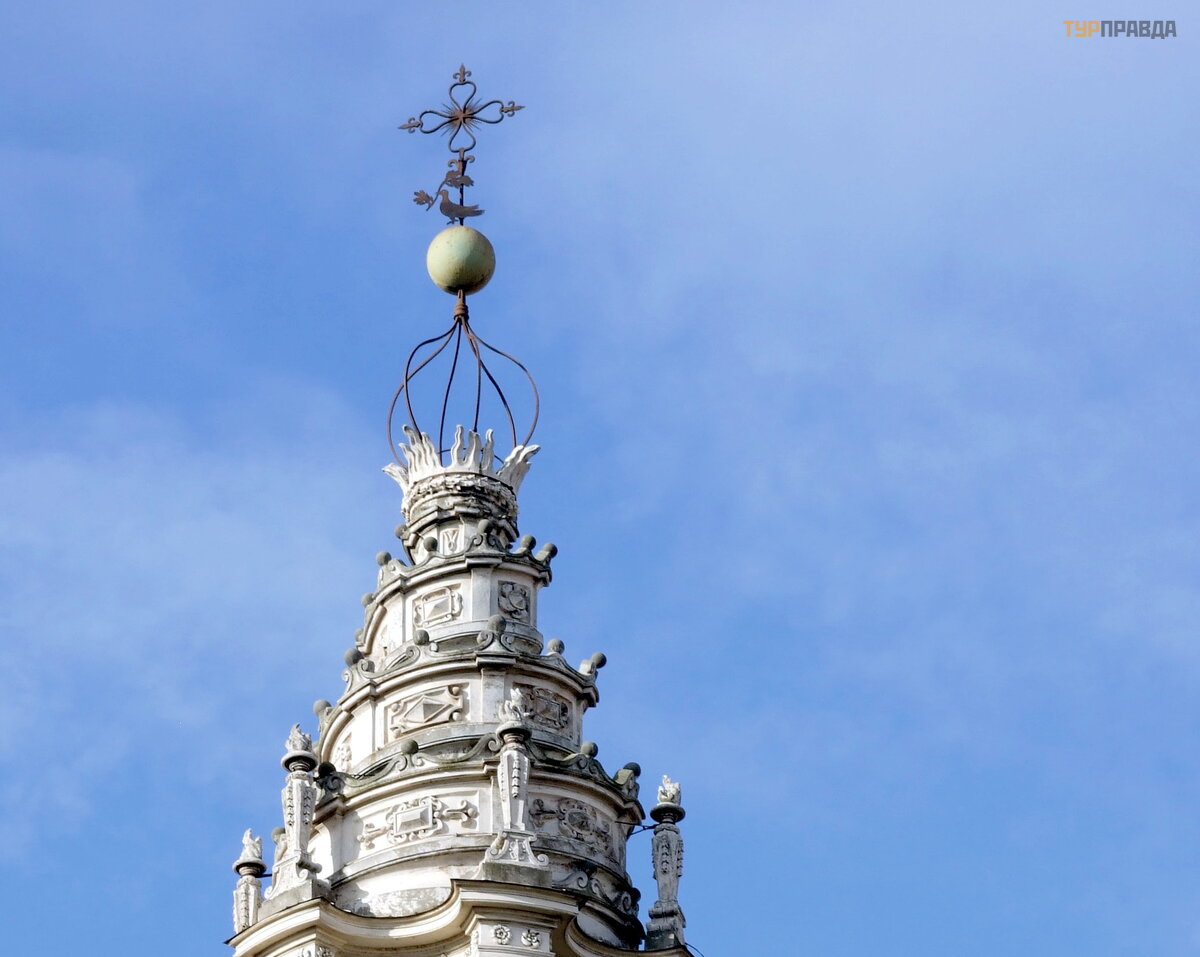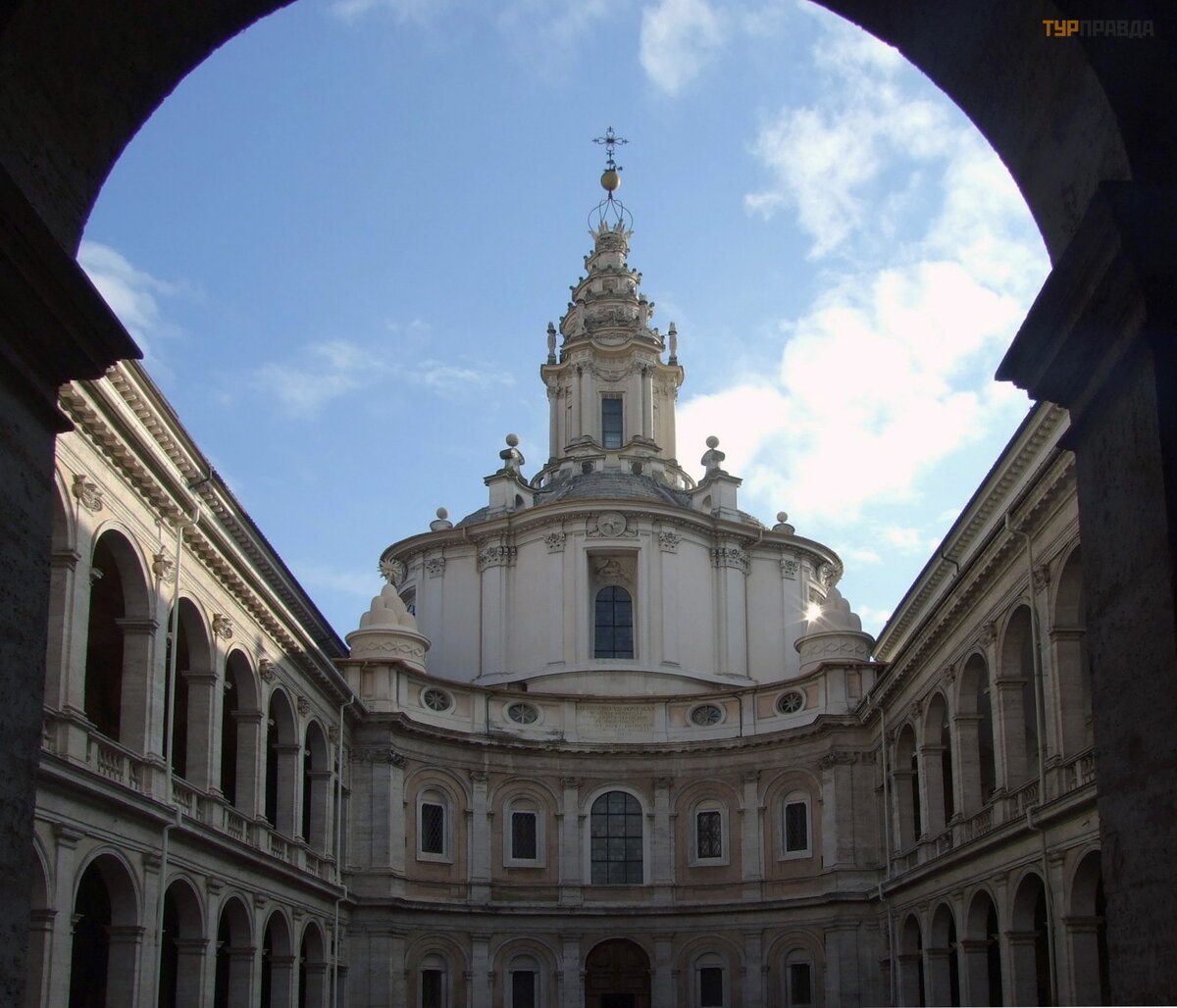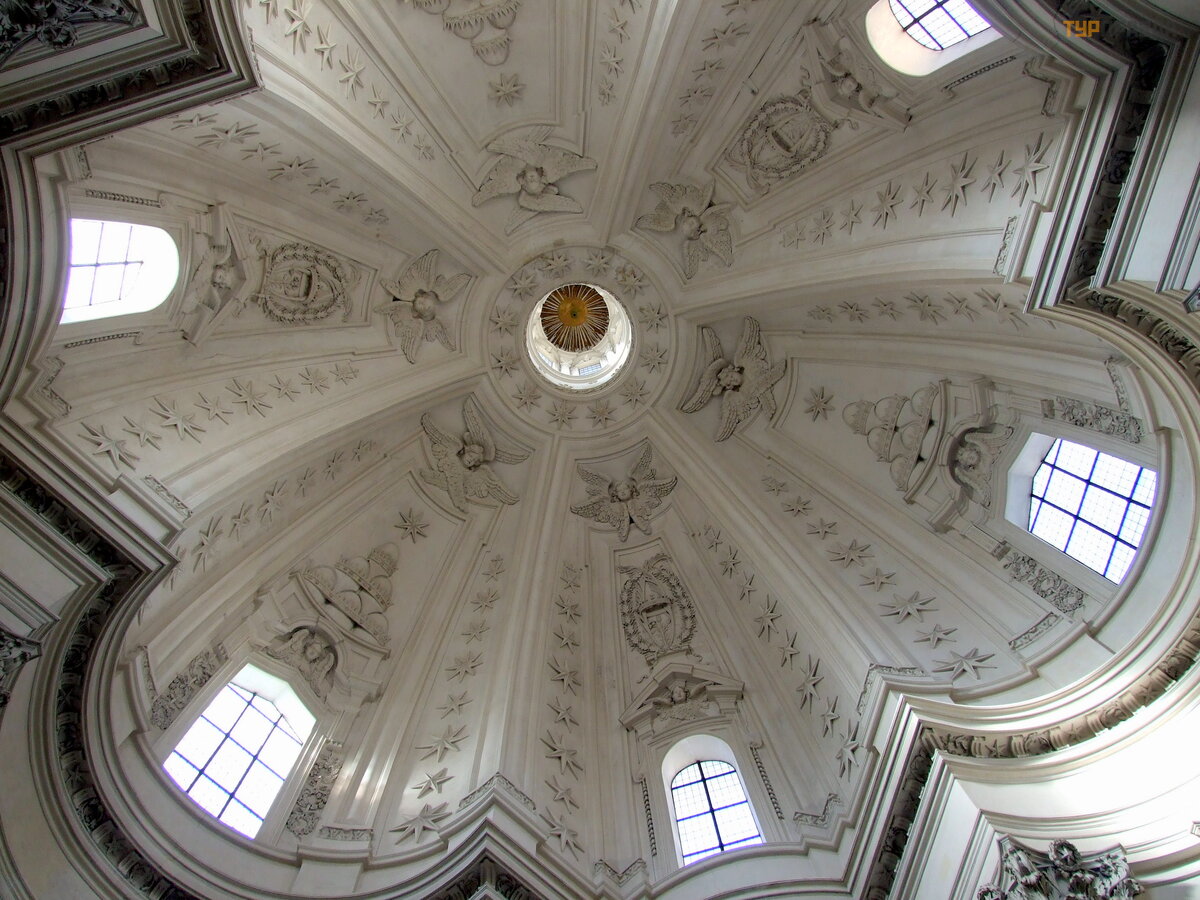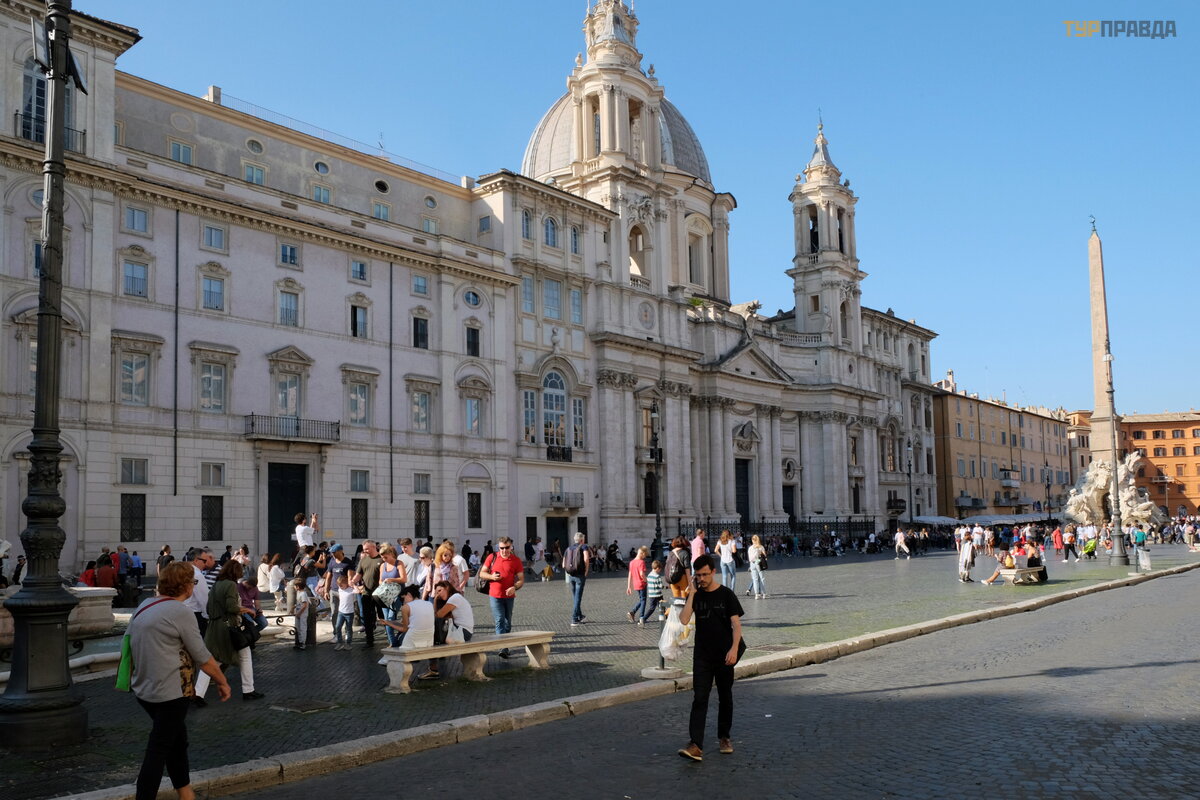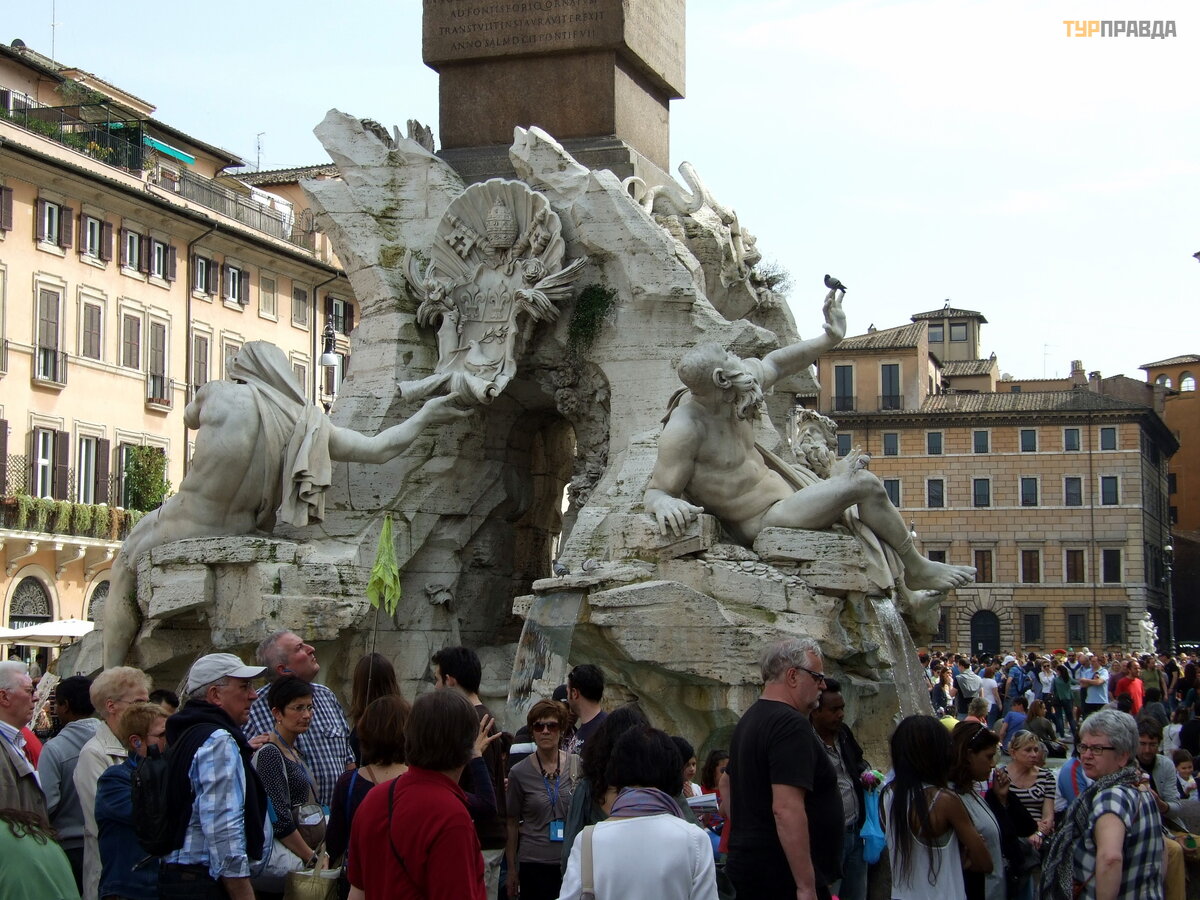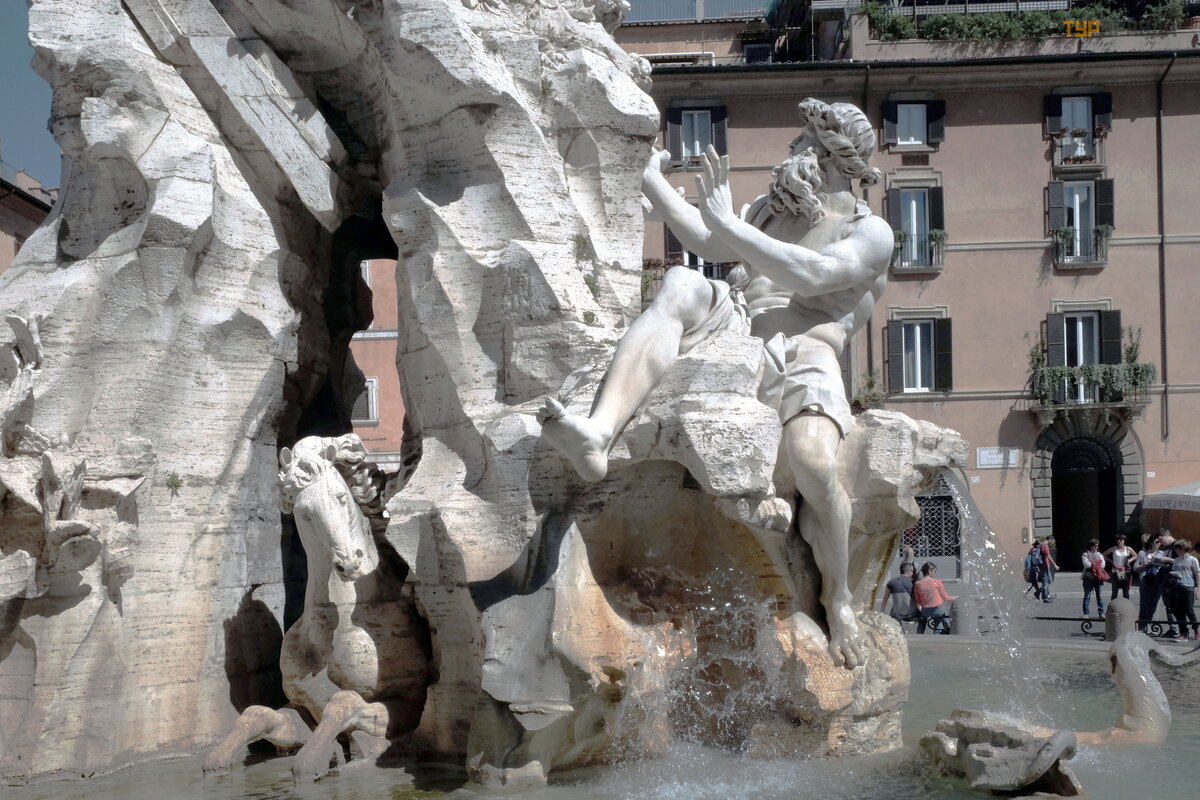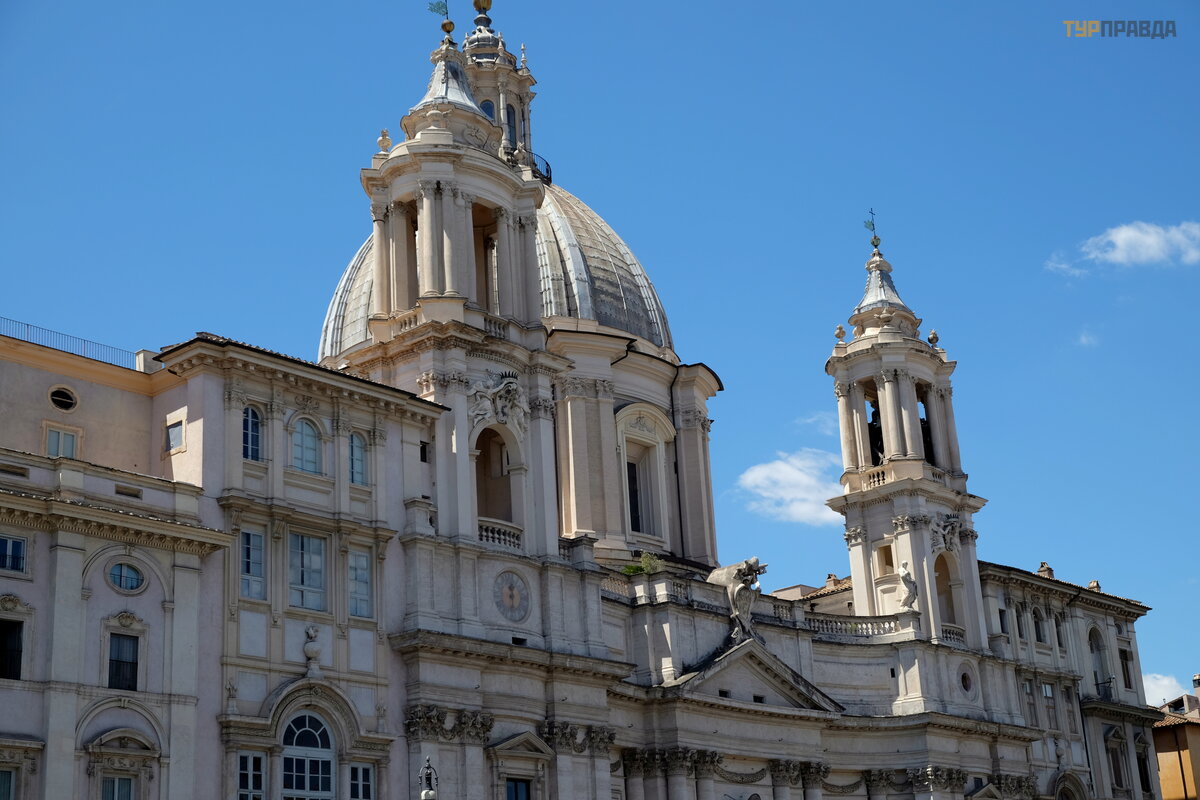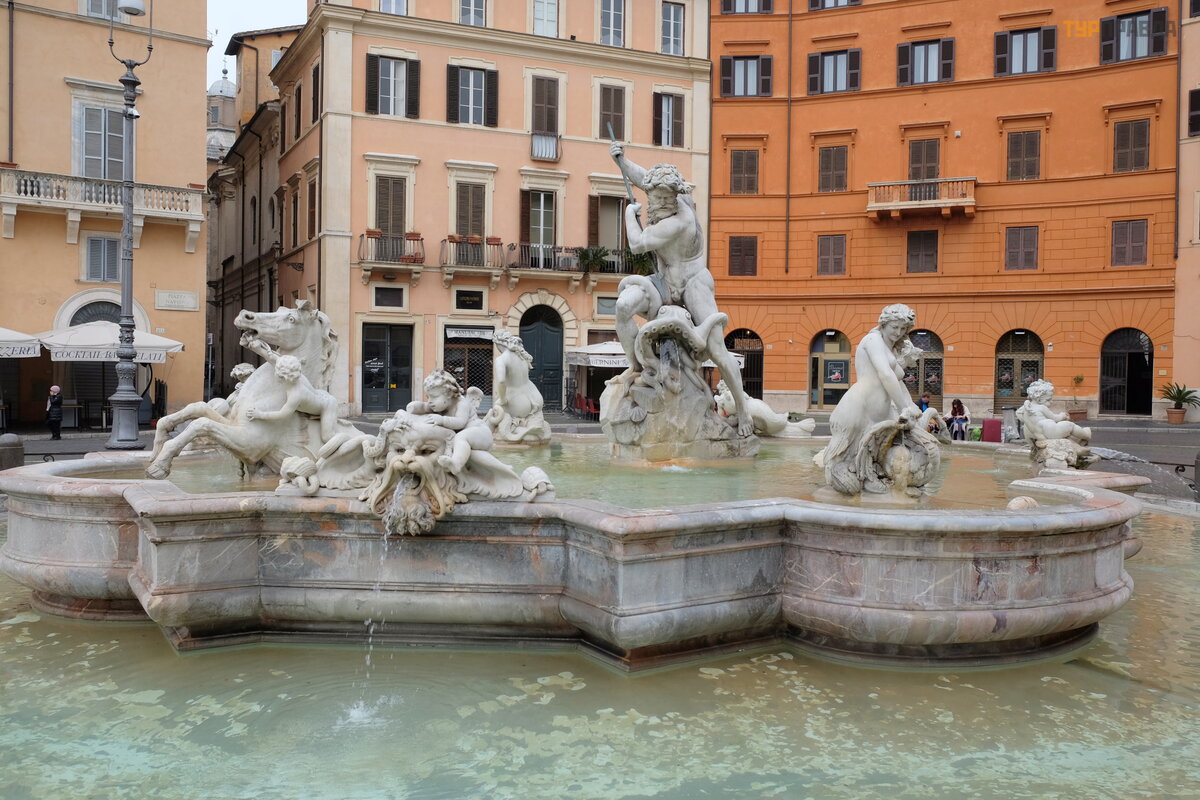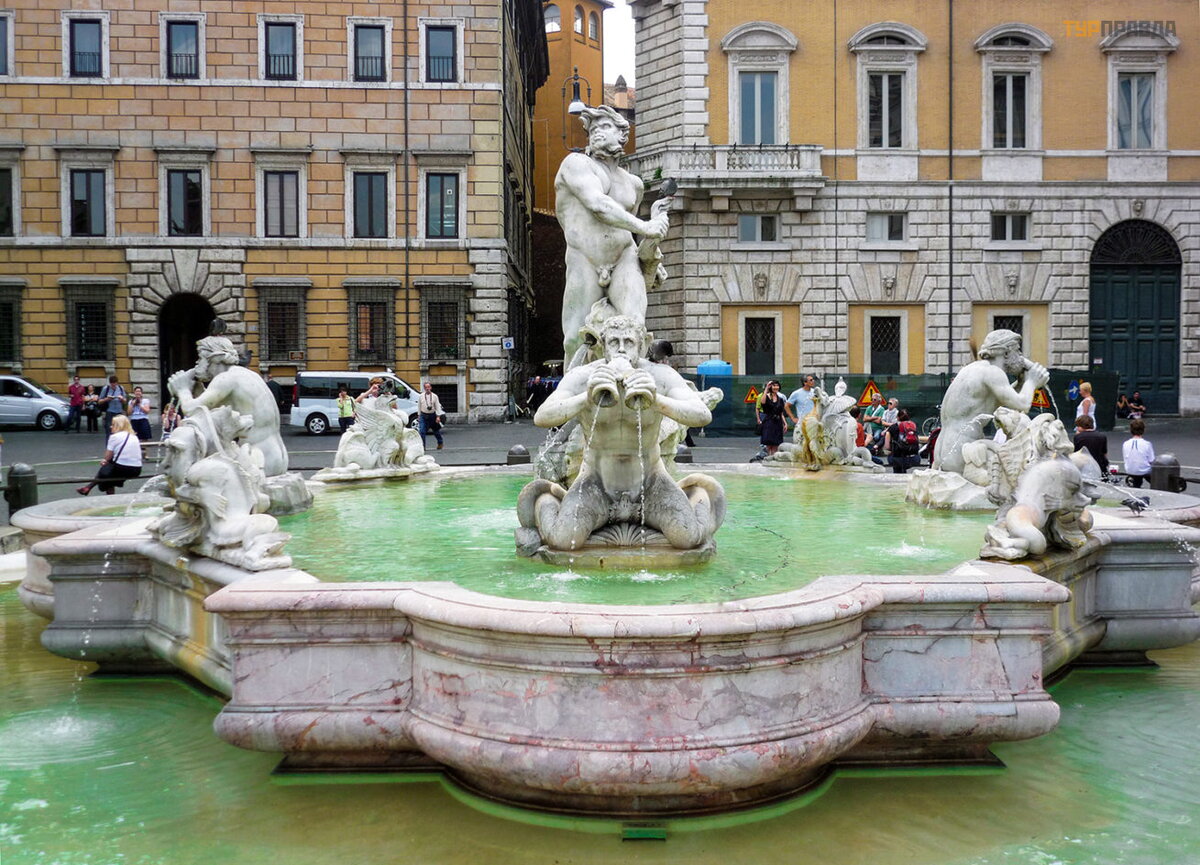Puglia and a bit of Rome. Part 10. Rome. Sunday walks (continued)

To be continued. Start here >>>
We continued our Sunday walk around the city. Somehow it is still impossible to write about Rome briefly.
After the bridge of the Holy Angel, from the embankment begins the Roman district, named after the bridge - Ponte (Ponte), it is cut through by a wide road Corso Vittorio Emanuele II, where buses stop. This time we decided to go for a walk to the right of the street, to the area where the Florentines lived in the Middle Ages.
San Giovanni dei Fiorentini, the church of the Florentine community in Rome, interestingly, this is the only church where you can go with dogs and cats.
The church was created in the 16th-17th centuries by outstanding masters: Sansovino, della Porta, Sangallo Jr. , Galilei and Carlo Moderno, Lanfranco.
The brilliant architect Francesco Borromini is buried in the church,
In the last year, he was depressed, destroys all his drawings and drawings and decides to commit suicide by stabbing himself with a sword. However, he does not die immediately and manages to repent.
And this altar is his last work, the sculptural group was made by Antonio Raggi, the author of many sculptures designed by Bernini (for example, "Danube" in the "Fountain of the Four Rivers"):
Another sculptural group is the "Baptism of Christ", by the sculptor Francesco Mochi, who sculpted St. Veronica in St. Peter's Cathedral:
The crypt contains the “Foot of St. Mary Magdalene. This foot, which first entered the Tomb of the Resurrected Christ. The stand was created by Benvenutto Cellini, and the bones are placed in an elegant slipper by an unknown author.
Next we went along Via Giulia,
parallel to the Tiber embankment, it was built by Bramante by order of Pope Julius II, and was named after the customer. A long (almost 1.5 km) and straight street connected the Vatican and the Capitol area. The street was opened in a festive atmosphere in 1508, many houses of the 15th-16th centuries have been preserved as a single ensemble, it is interesting to walk along it and look at the facades of houses, their details. Many buildings are associated with the names of the great masters of the Renaissance.
Only one thing is bad - because of the small width, it is bad to photograph the facades of palaces and churches.
Raphael's house (with a balcony), although it was completed after the death of the artist:
Natives from Armenia already lived further. Church of San Biagio degli Armeni (1700), the Catholic Church of the Armenian community:
The community from Siena has its own church "Saint Catherine of Siena on Via Giulia" (Santa Caterina da Siena a Via Giulia).
In Rome, there is another church of Catherine of Siena, which we visited a day later.
Churches are churches, but without a prison in any way. This yellow building is exemplary "New Prisons" (1655) of Pope Innocenzo X. Now there is an anti-mafia committee.
But these stone blocks near the hotel, on which passers-by often rest, are popularly called “Julia sofas”, these are the remains of the foundation of the unrealized building of the “Palace of Courts”:
Further on, another Roman district begins - "Regola".
In the center is the house of Pietro Paolo della Zecca, coiner of Pope Paolo II, the expression "nuovo di zecca" - "new from scratch" (as from the mint), went into the world from his last name.
On the left of the house is the ancient shrine of Rome - the pomerium, which marked the sacred border of the city.
It was determined during the laying of the city and was indicated by such white stones. Within these boundaries, only the laws of the city were in effect. In Rome, it was impossible to cross it to non-believers and armed groups. So the episode of the Hollywood movie "Cleopatra", where she solemnly enters the city center, is a myth. She lived at Caesar's villa on the Yannicul hill.
In the lane you can see the church of the Neapolitan community Santo Spirito dei Napoletani:
Falconieri Palace, designed by Francesco Borromini:
Falcon heads of two gems on the facade of the house:
The Hungarian Academy currently owns the property. You can get there by appointment. Everyone admires the rooftop terrace (photo from the Internet):
The picturesque arch "Farnese" is an unrealized project by Michelangelo, according to which the garden of the Farnese Palace was supposed to be connected by means of a suspension bridge over the Tiber, with the Villa Farnese (Farnesina) in Trastevere.
Wine instead of water flowed in the Mascherone (Great Mask) fountain during the festivities organized by the House of Farnese. An unknown master used materials from ancient Roman baths.
Nearby is the Church of Santa Maria dell'Orazione e Morte. From the 16th to the 19th centuries the nameless dead are buried here, the skeletons are in the crypt of the church.
We reached the beginning of Via Giulia at the Sista bridge (1479):
Let's go further, cross the tram tracks on Via Aurelia and get into the area of the Jewish ghetto. The Fountain of Tears (Fontana del Pianto), in Piazza Cinque Scole,
was created at the end of the 16th century according to the sketches of Giacomo della Porto, like many other fountains in the historical part of the city. Fountains at that time played a huge role as a source of drinking water. Until now, water is supplied to them through different aqueducts and residents know where the water is better.
From there we go to see the famous "Turtle Fountain" on Mattei Square. According to a beautiful legend, the fountain was built in one night, but it was built in 1580-1588. designed by the architect Giacomo della Porta, and the ephebe figures were executed by Taddeo Landini.
Previously, there were four more dolphins on top of the fountain, but then, due to poor water pressure, they were repeatedly moved. Now they decorate the fountain on Colonna Square. But the author of the turtles, which have now replaced the dolphins, is unknown, they make different assumptions (including Bernini). Turtles have been kidnapped several times,
the surviving originals were placed in the Capitoline Museum, and there are copies on the fountain. 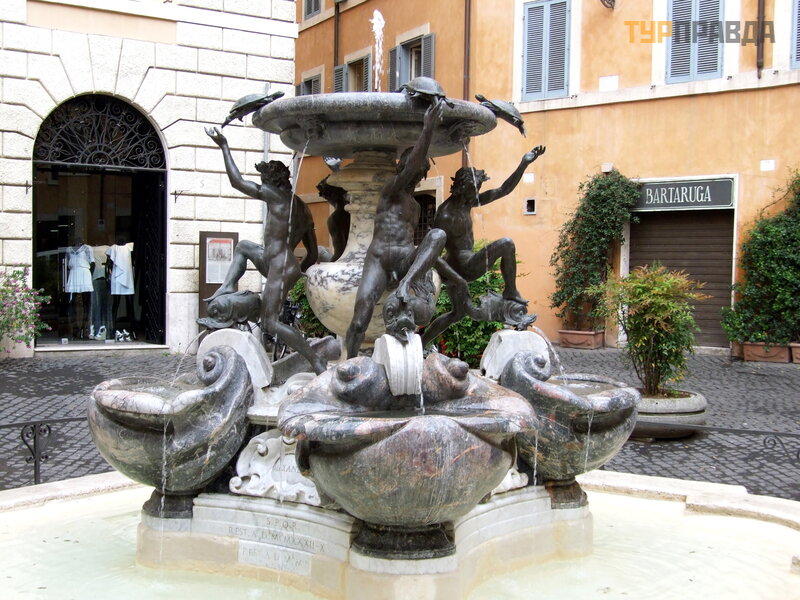
Nearby is a complex of buildings of the Mattei family, which includes several palaces that belonged to this family.
The jewel of the city is the courtyard of the Palazzo Mattei, a kind of open-air museum. Entrance there is free. All the sculptural treasures are placed on the walls, and many of the reliefs are framed by carved frames made for them. On the second floor there is a loggia. The Mattei Collection is the richest private collection of marble art.
Then we moved back to the market in Campo del Fiori, in front of the Palazzo Spada, the original fountain in the form of a niche with a nymph:
We pass by the church of Santa Barbara:
And this nice building is the Central Children's Library:
We went to Piazza Farnese:
The Palazzo of the Dukes of Farnese (the same arch over Via Giulia) is one of the most beautiful palaces in Rome, a magnificent masterpiece of the Renaissance, the work of Sangallo the Younger (front and side facades), Michelangelo (cornice, balcony, loggia and most of the courtyard ) and della Porta (rear faç ade with large loggia overlooking Via Giulia). Construction was completed in 1589. Today there is a French embassy.
There are two twin fountains in Piazza Farnese, built by the architect Carlo Rainaldi (1626). They are made of Egyptian granite and consist of several bowls of different sizes.
The only church on the square - St. Brigid (S. Brigida) - arose here before the palace, in 1391, the year of the canonization of the Swedish saint.
Here is Campo del Fiore, the only historic square in Rome that doesn't have a church. But not a single square is complete without a fountain; this fountain was donated to Campo de Fiori by the City Hall of Rome in 1898. It is an exact copy of the old fountain of the 16th century, destroyed for some reason.
In the middle of the market is a monument to Giordano Bruno, at the site of his death in the fire of the Inquisition.
During the day it is very busy here, hundreds of locals and tourists roam. I would not call the prices on the market cheap, but quite normal to buy cheese and fruit for a snack.
Hotel covered in ivy:
After having a snack, we decided to look at the paintings of the great Carravaggio, there are more than twenty of them in Rome, seven of them are in churches.
We pass to the area of Sant'Eustachio, named after Saint Eustacheo (Eustace) and the church of the same name.
Eustquechio in the first half of his mature life was General Placidius. During one of the hunts for a deer, he saw a golden cross in the forehead of an animal. It was a sign for him to accept Christianity. Subsequently, he accepted death with his family at the direction of Emperor Titus.
A church was erected on the site of his death, the current facade is from 1720, the bell tower is older - the 12th century.
At the top of the church, a deer with a cross in its forehead:
Nearby is the famous cafe Sant'Eustachio Il Caffè , which serves the best coffee in Rome. The coffee house has been here since 1800, the modern building is from 1933. The cafe has been visited by many world celebrities.
The coffee here is really excellent at a very inexpensive price, if you don’t sit at the tables (plus a toilet, which is important for travelers).
And above it all rises, screwing into the sky, the magnificent spiral of Borromini, the spire of the Church of San Ivo Sapienza, the Church of the University:
The church is open to the public only three hours a week, from 9 to 12 on Sunday. We visited it once five years ago. Here is a photo:
Borromini very rarely managed to complete the work in Rome.
This church is one of the few exceptions where the talent of a brilliant architect was manifested. The interior has a minimum of decor, clean lines and white color.
Then we went to one of the most beautiful squares in Rome - Piazza Navona, usually there are much more people here.
The famous "Fountain of the Four Rivers" made by four sculptors according to the design of Bernini.
Tour guides feed tourists stories, as if the figures of the Bernini fountain are horrified by the church of St. Agnes, in the work of which Borromini took part.
The indefatigable Giacomao della Porta in 1574-1575. he installed his fountains here, however, for three hundred years the fountain "Neptune" was without statues.
Then the figures of Neptune and the naiad were added to it (sculptors della Bita and Zappala).
The same story with the Moor fountain, the figure of the Moor was installed by Bernini in 1653 (the original is now in the Borghese Museum).
If you turn from the "Fountain of the Four Rivers" into a lane, you can go to the church of the French community of San Luigi Francheisi, but I will tell about this in the next story.
Continued by here >>>
